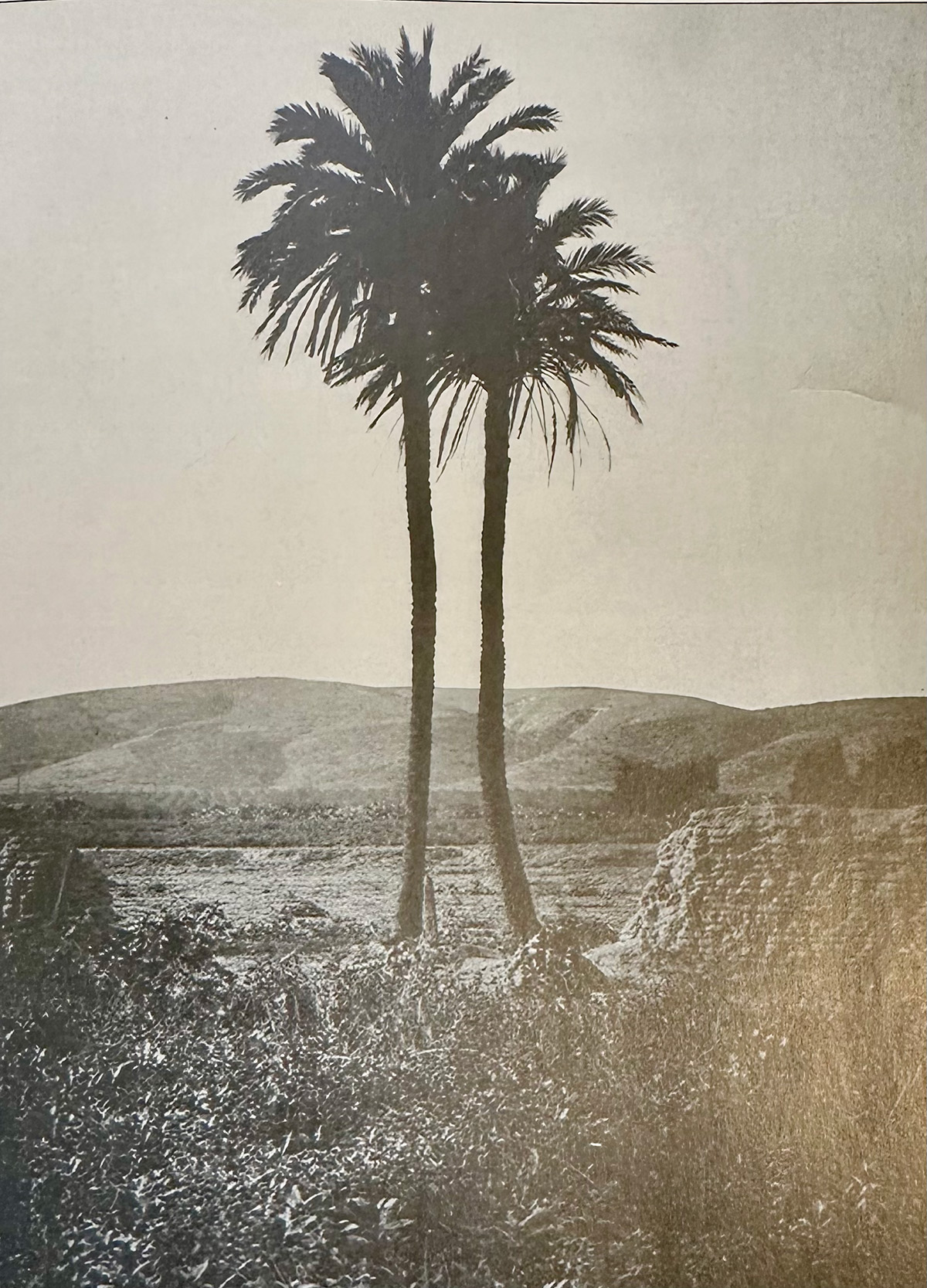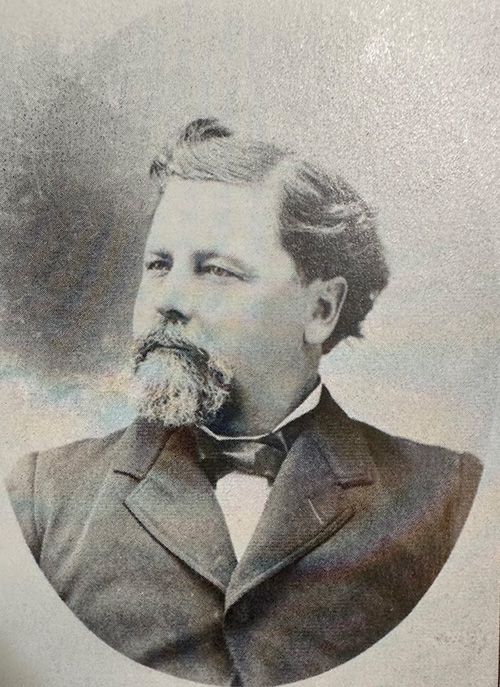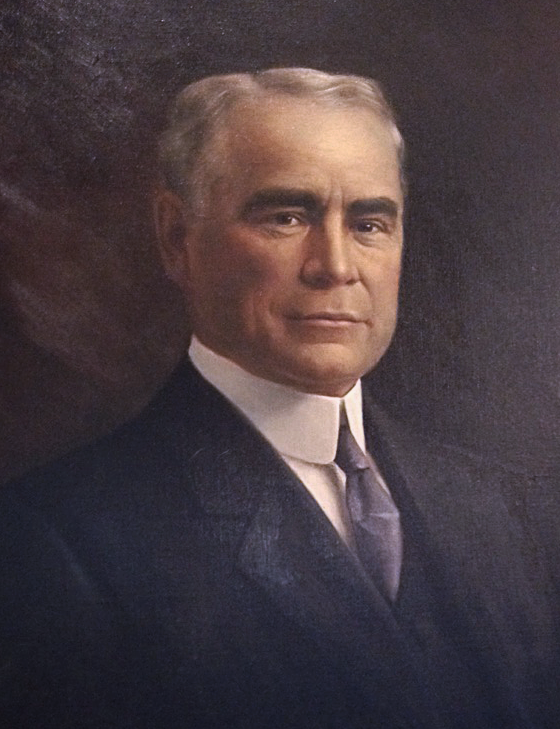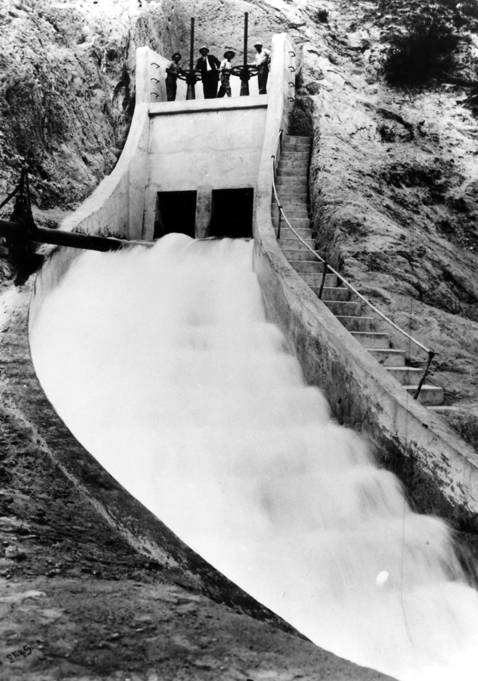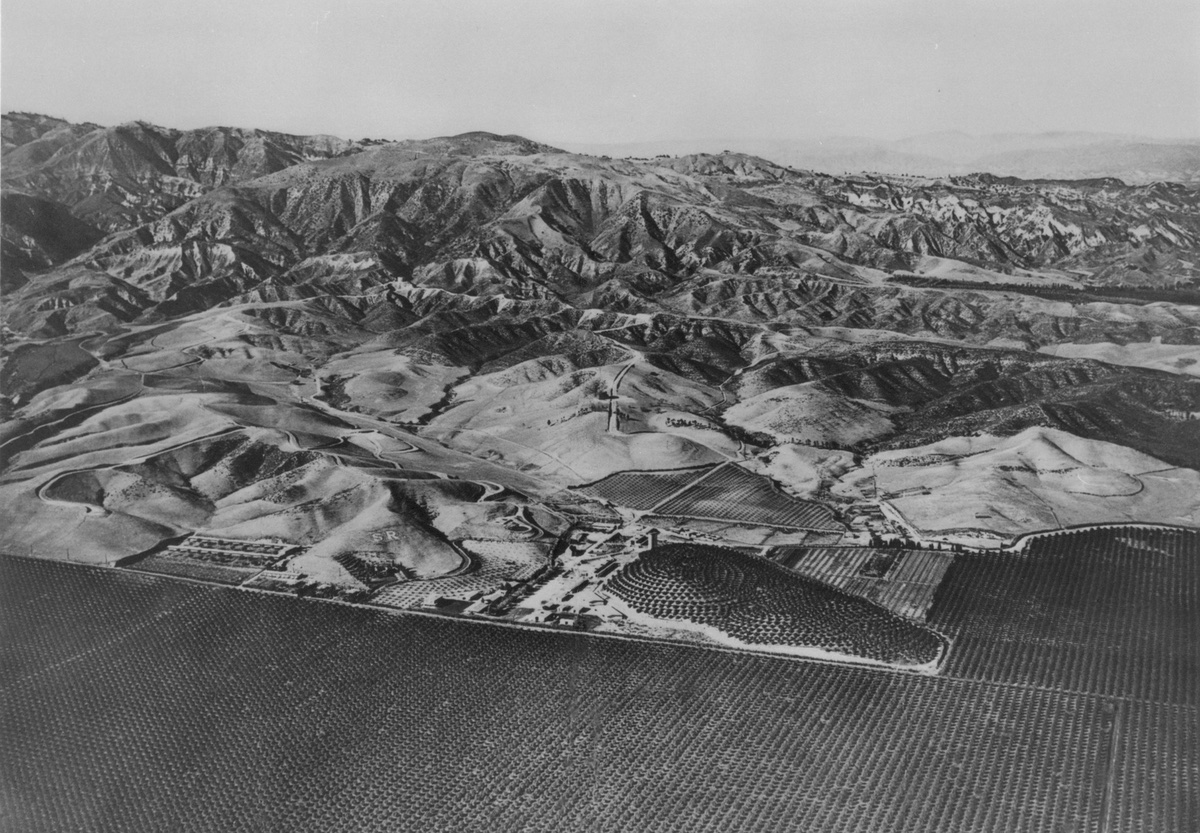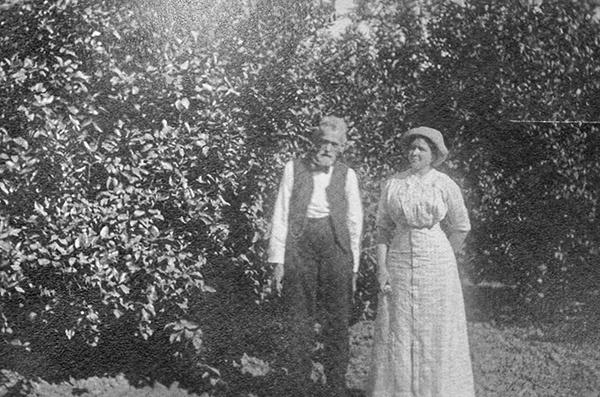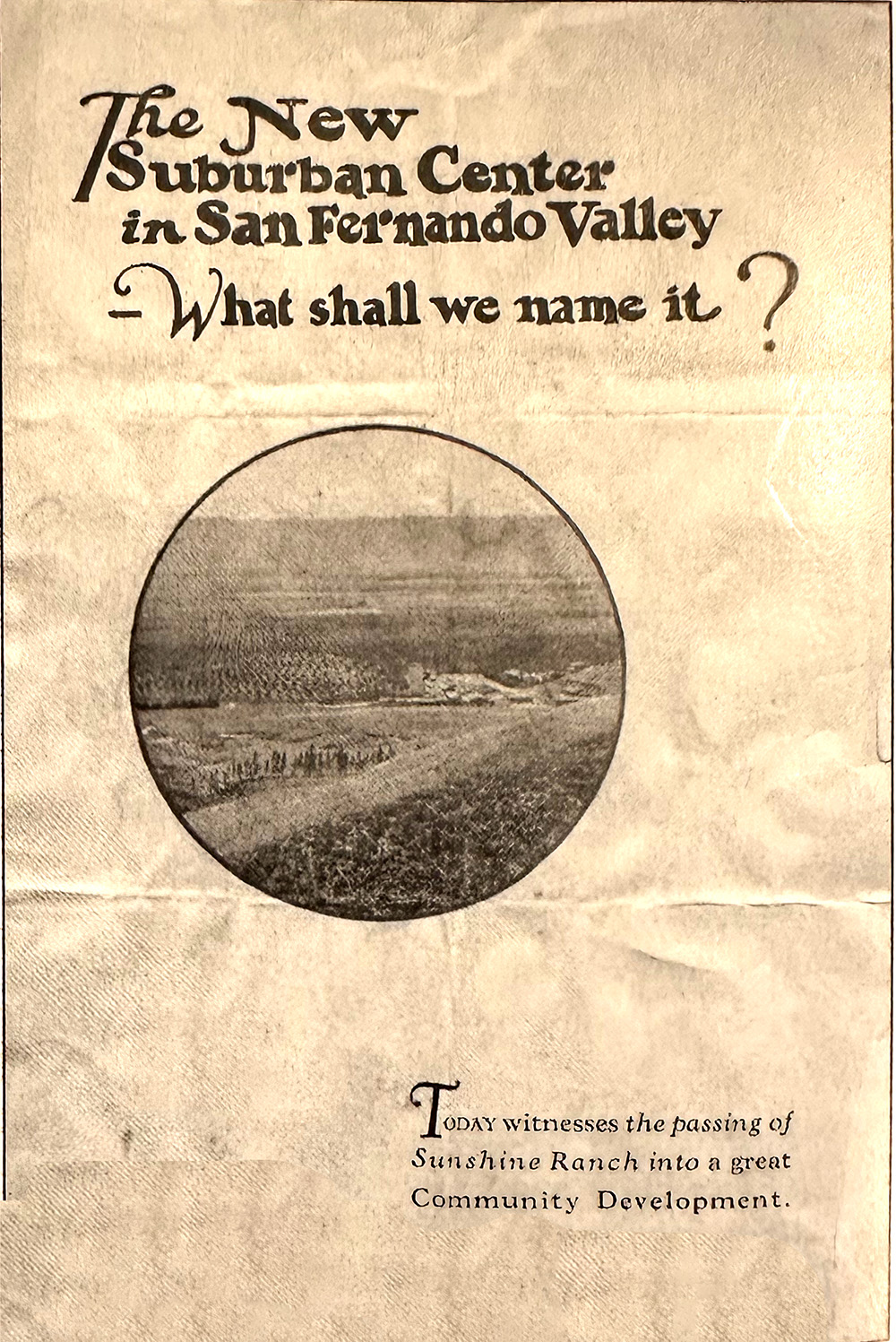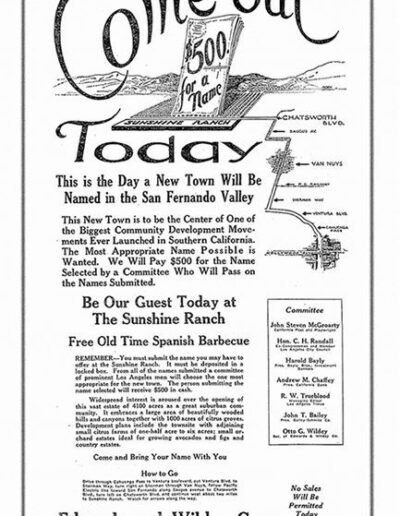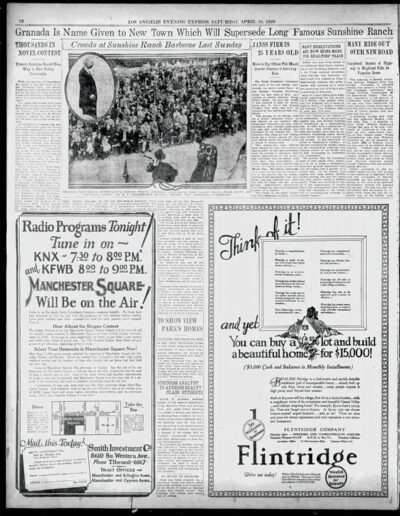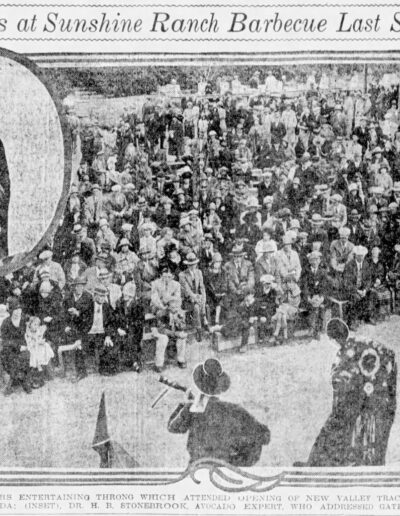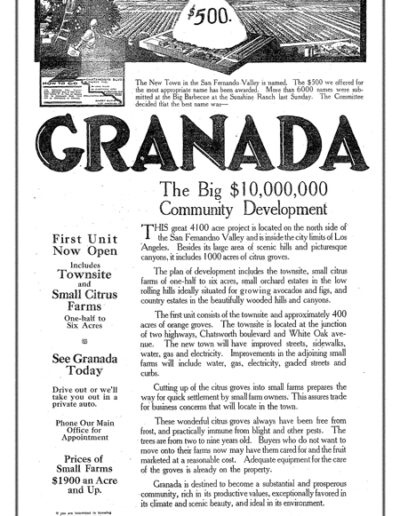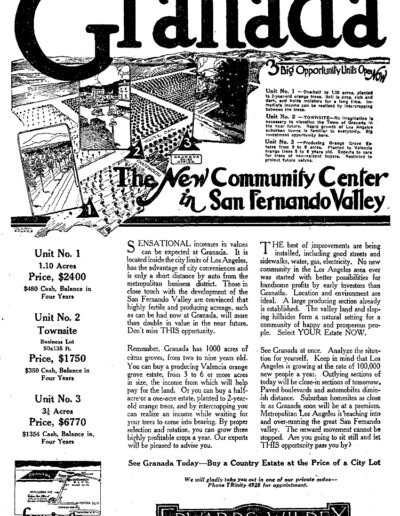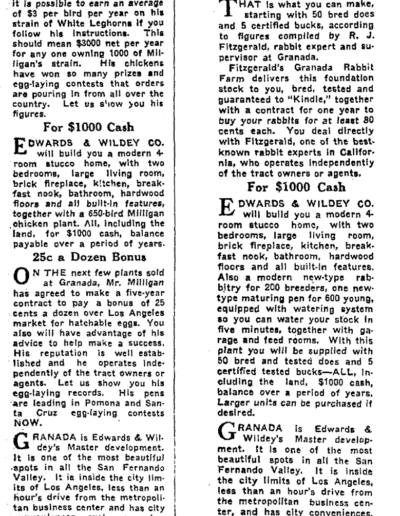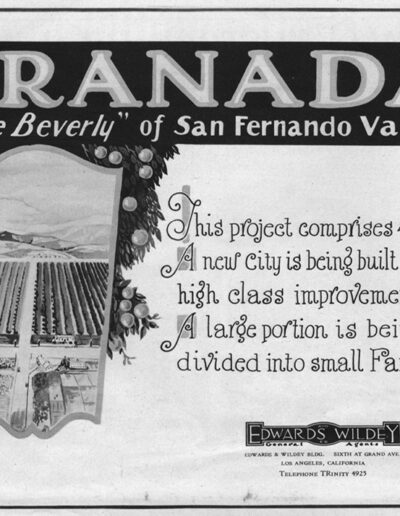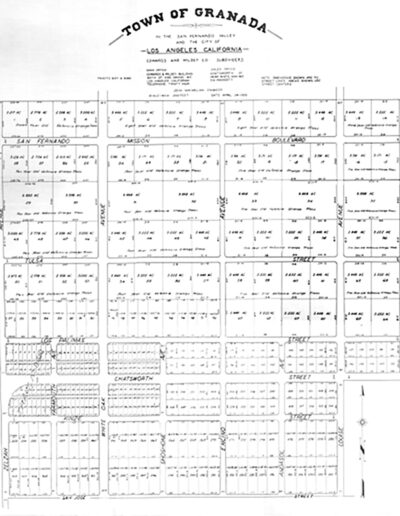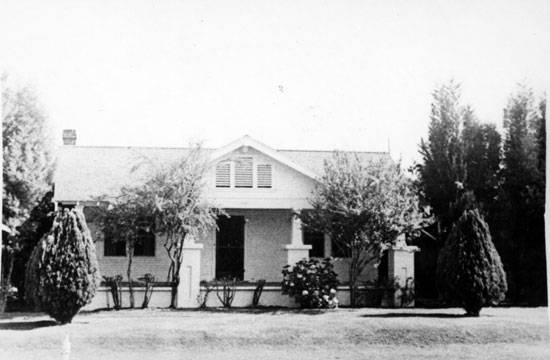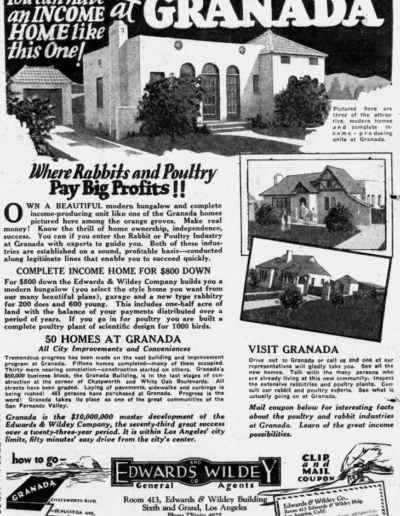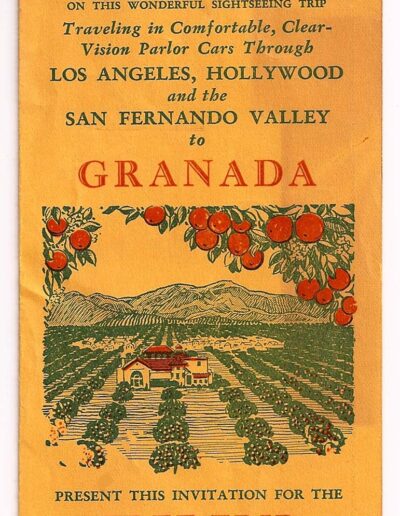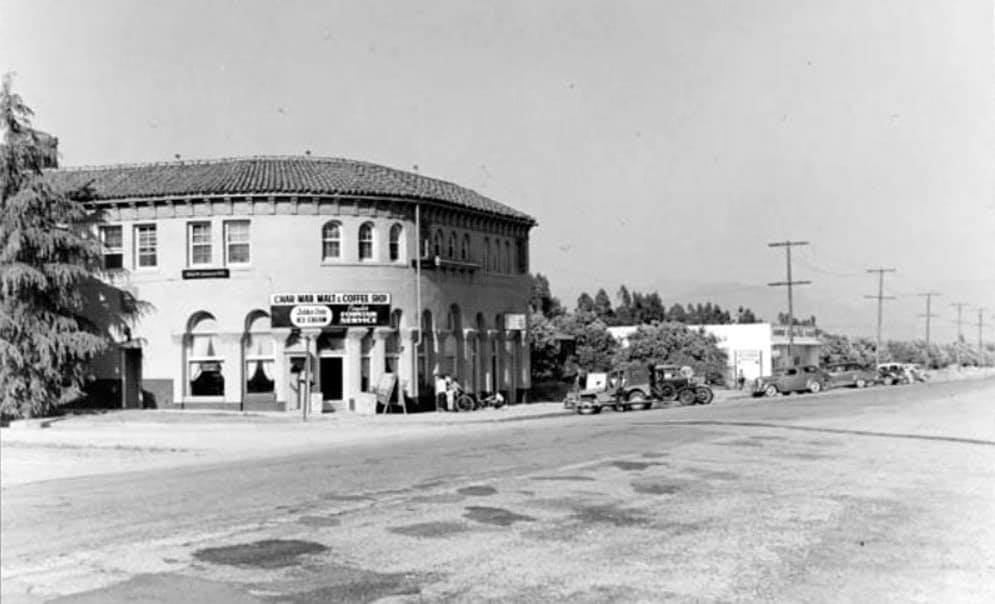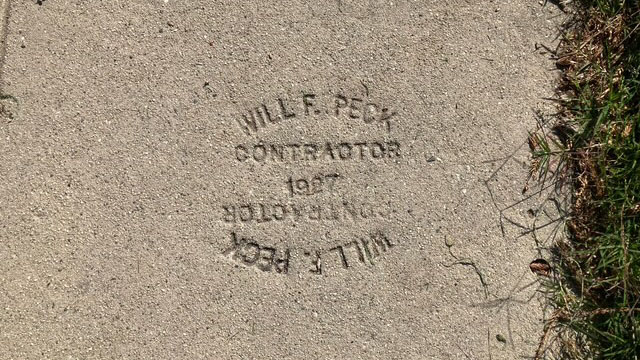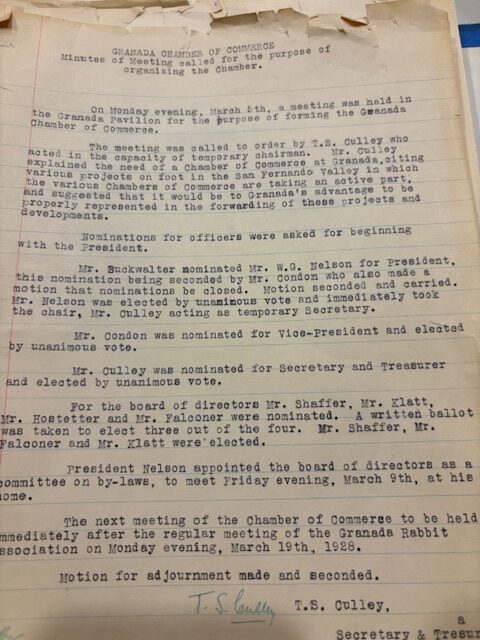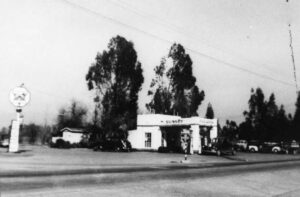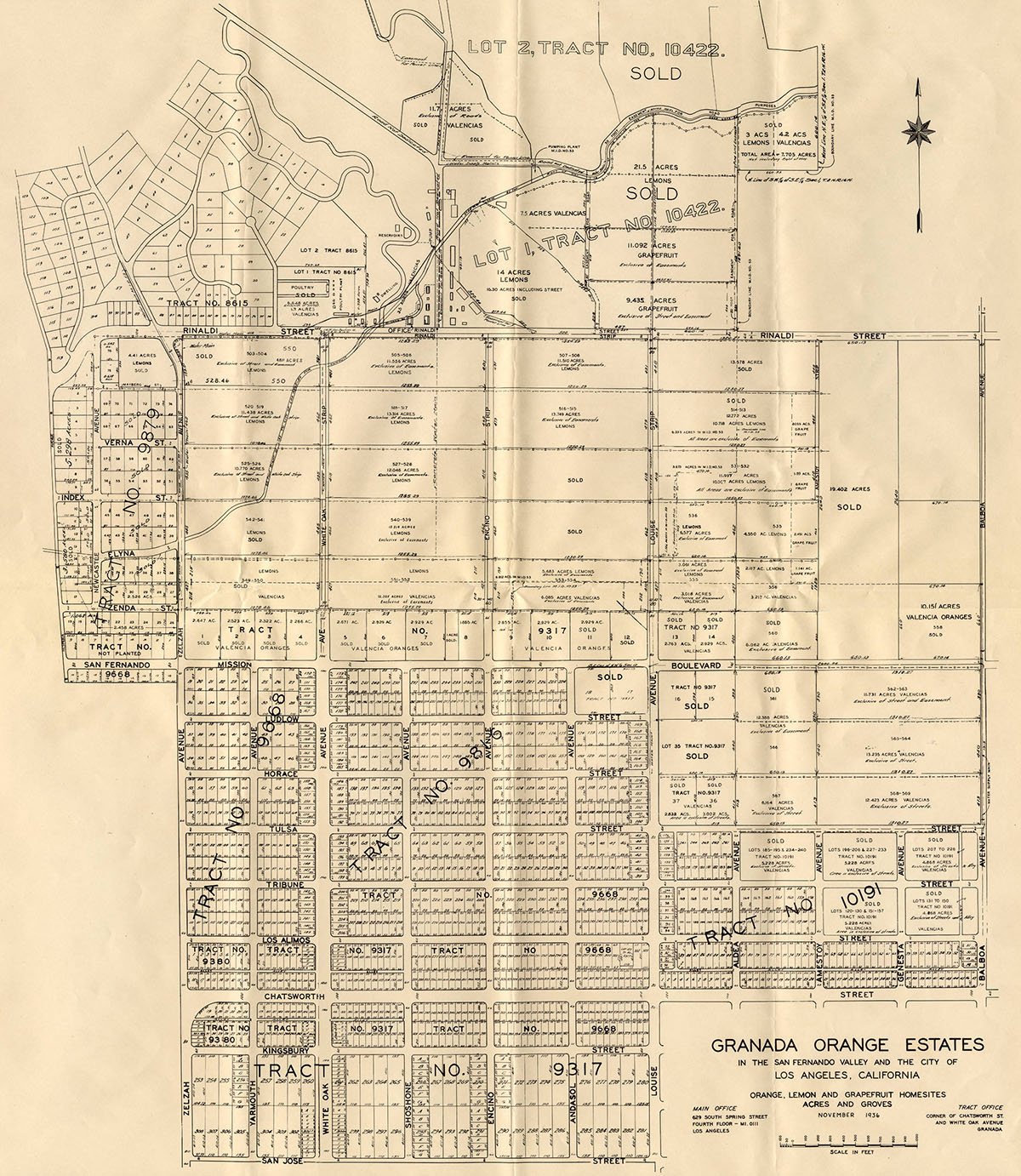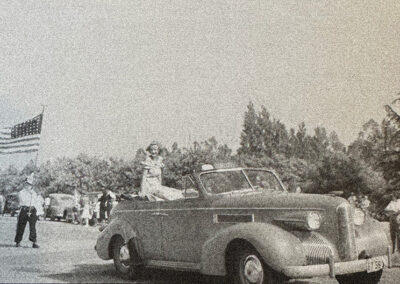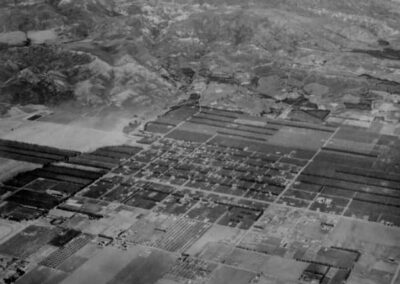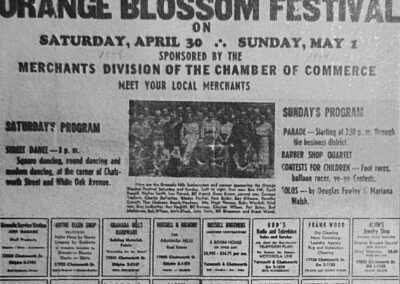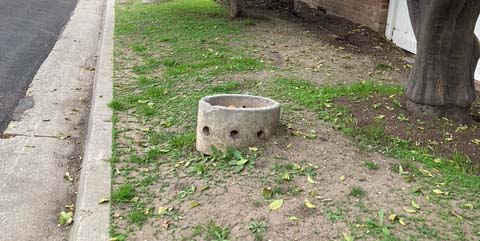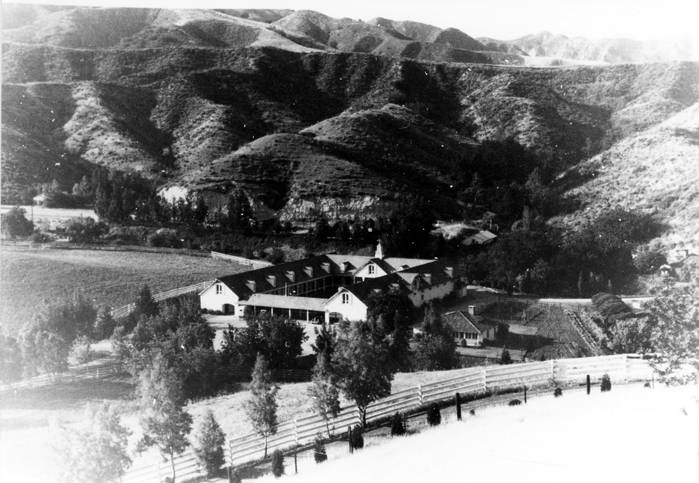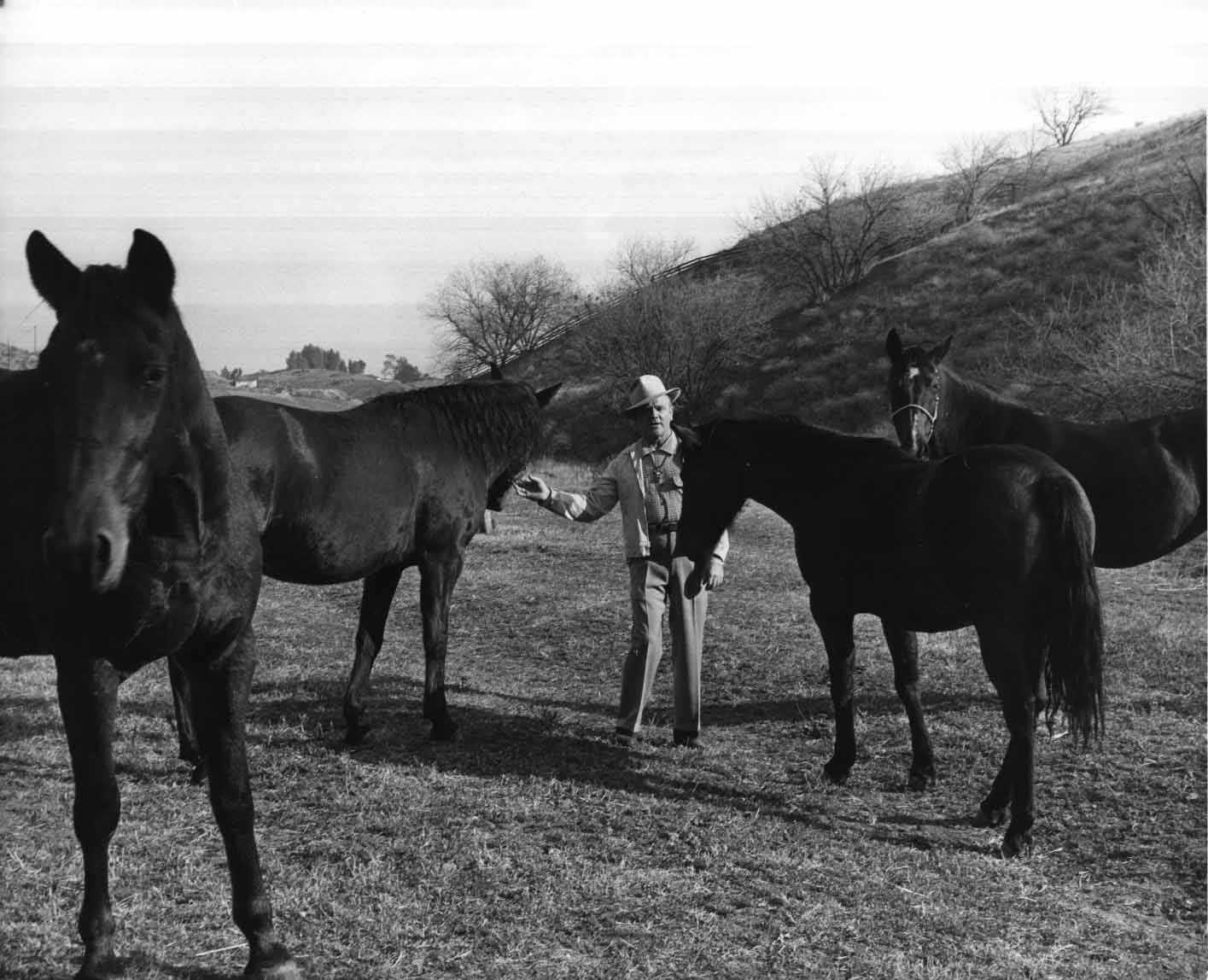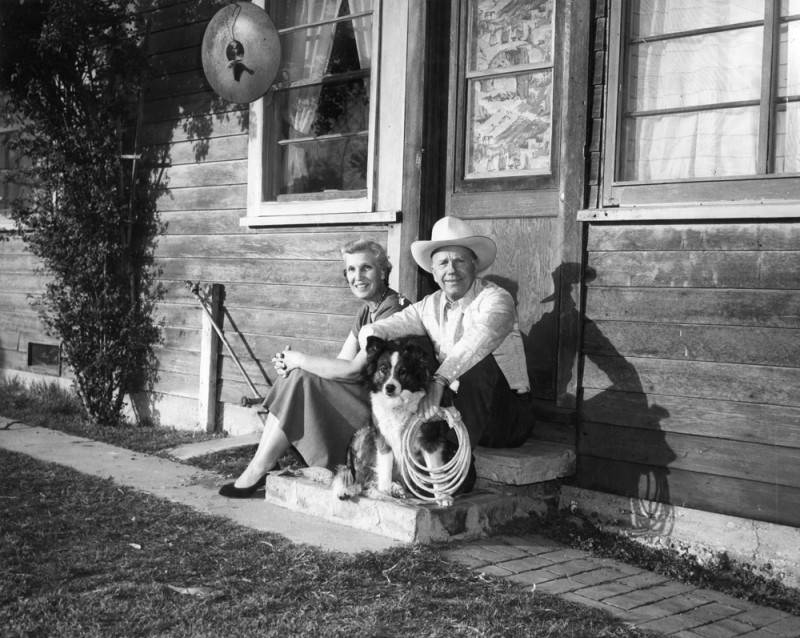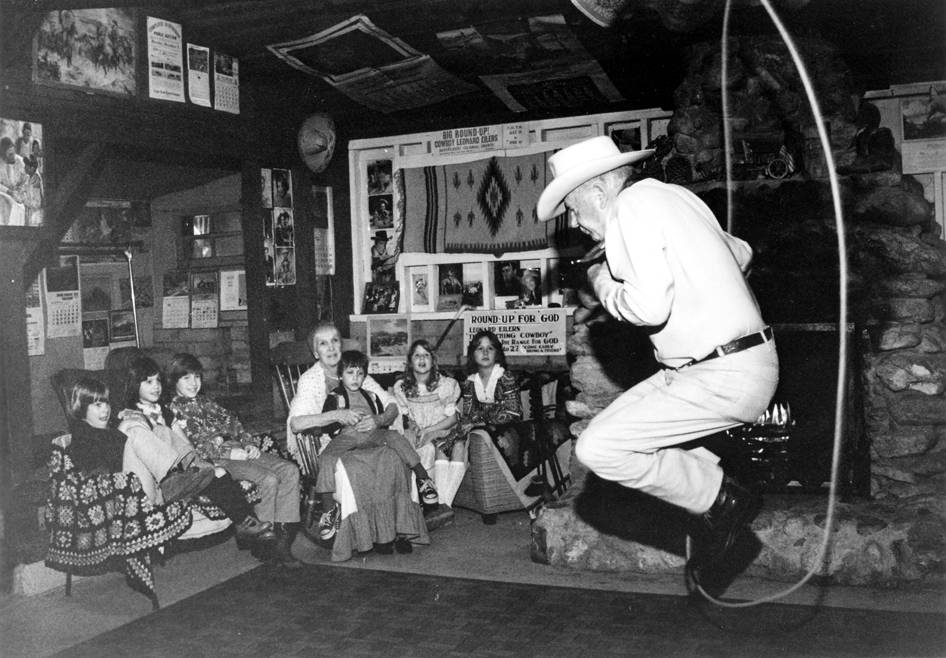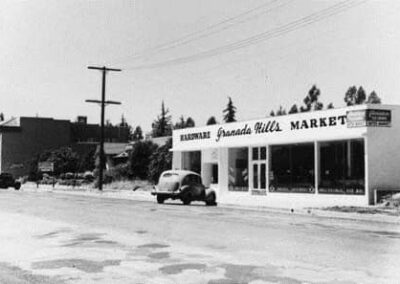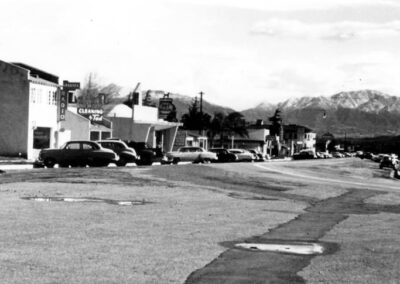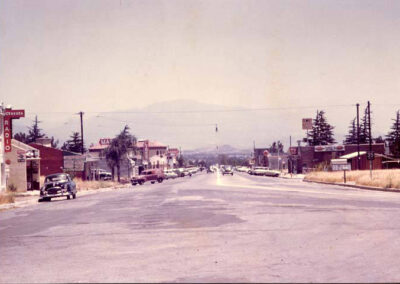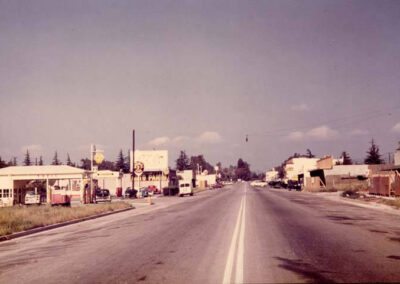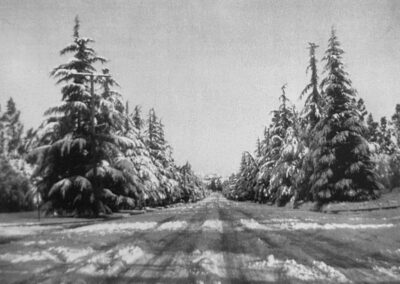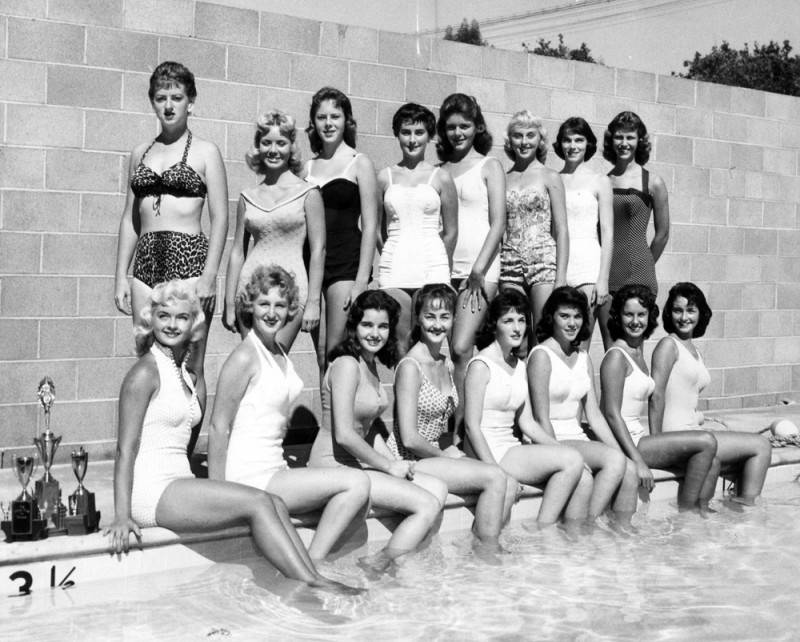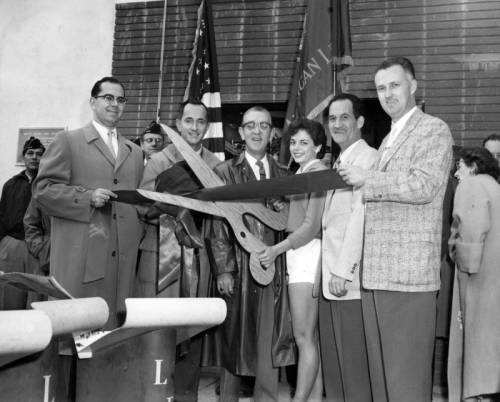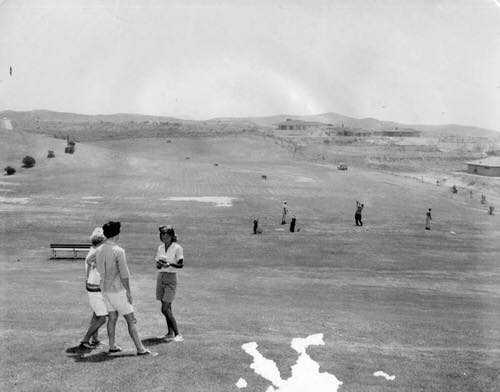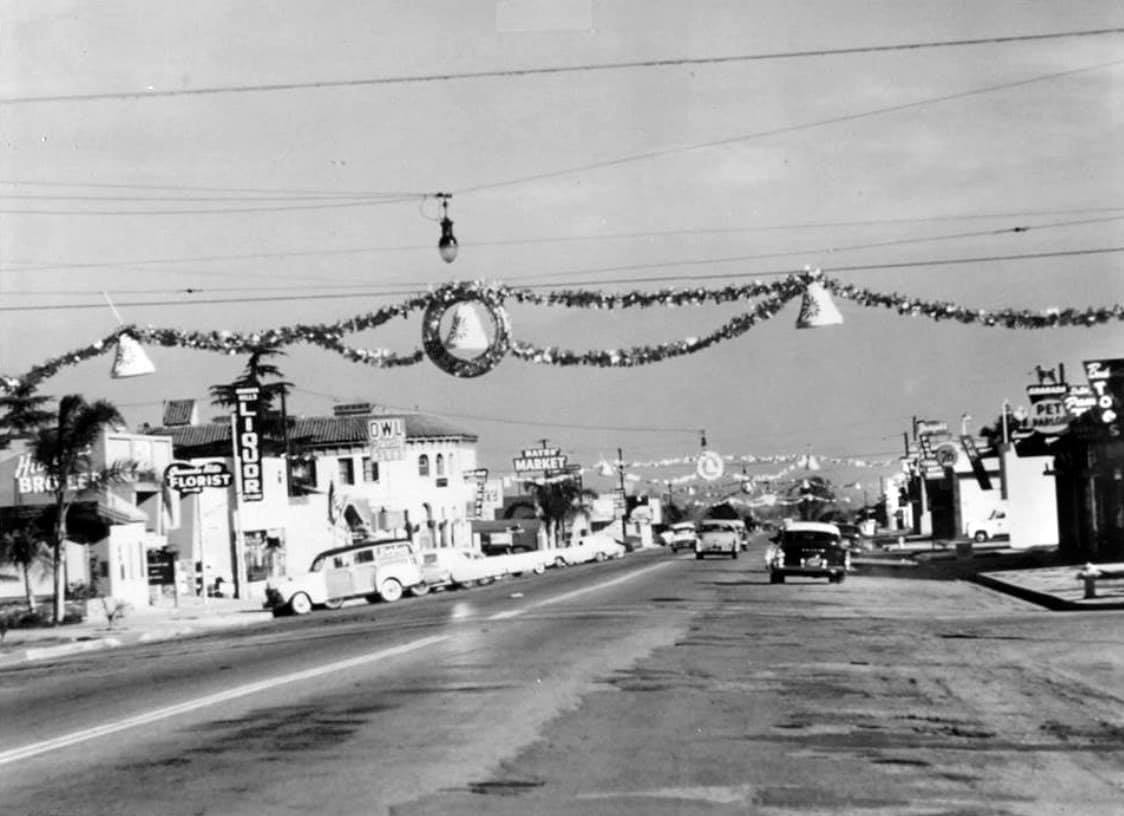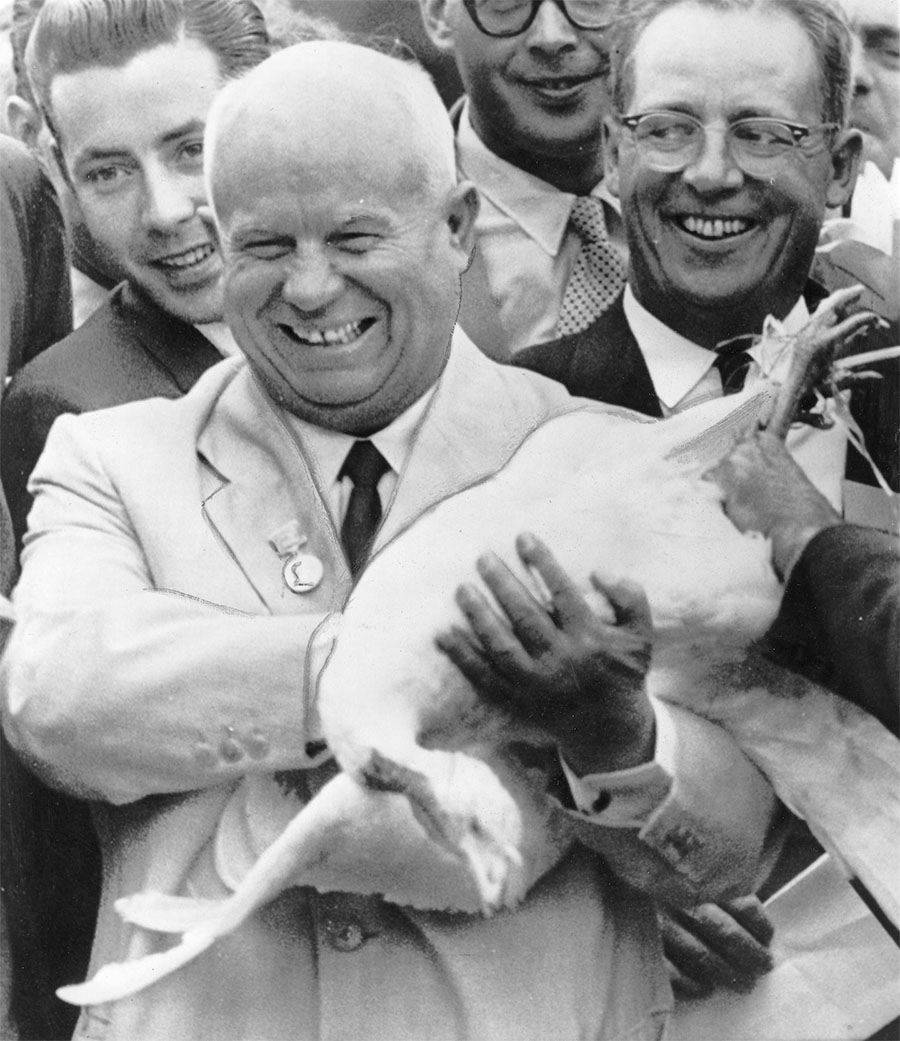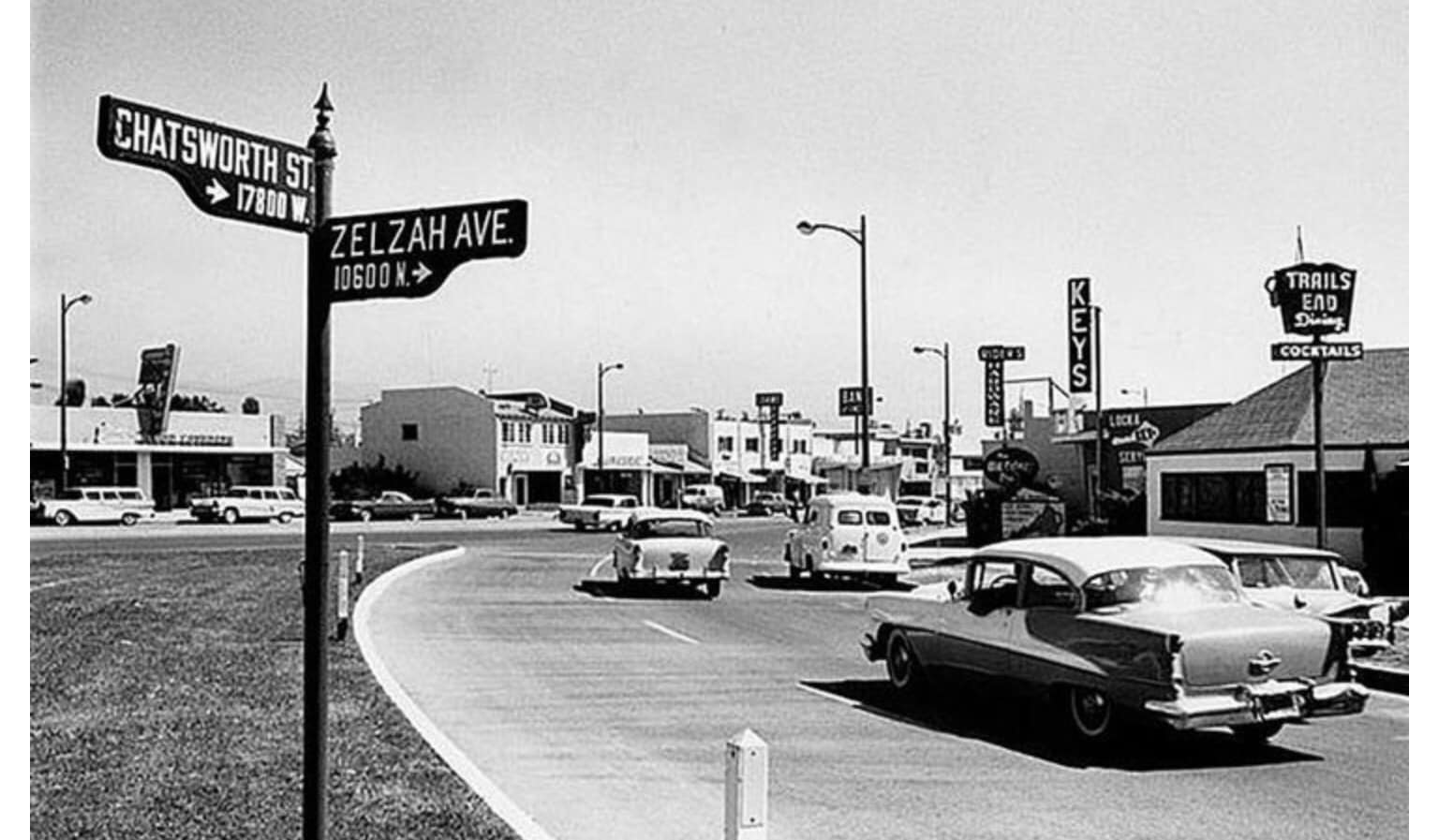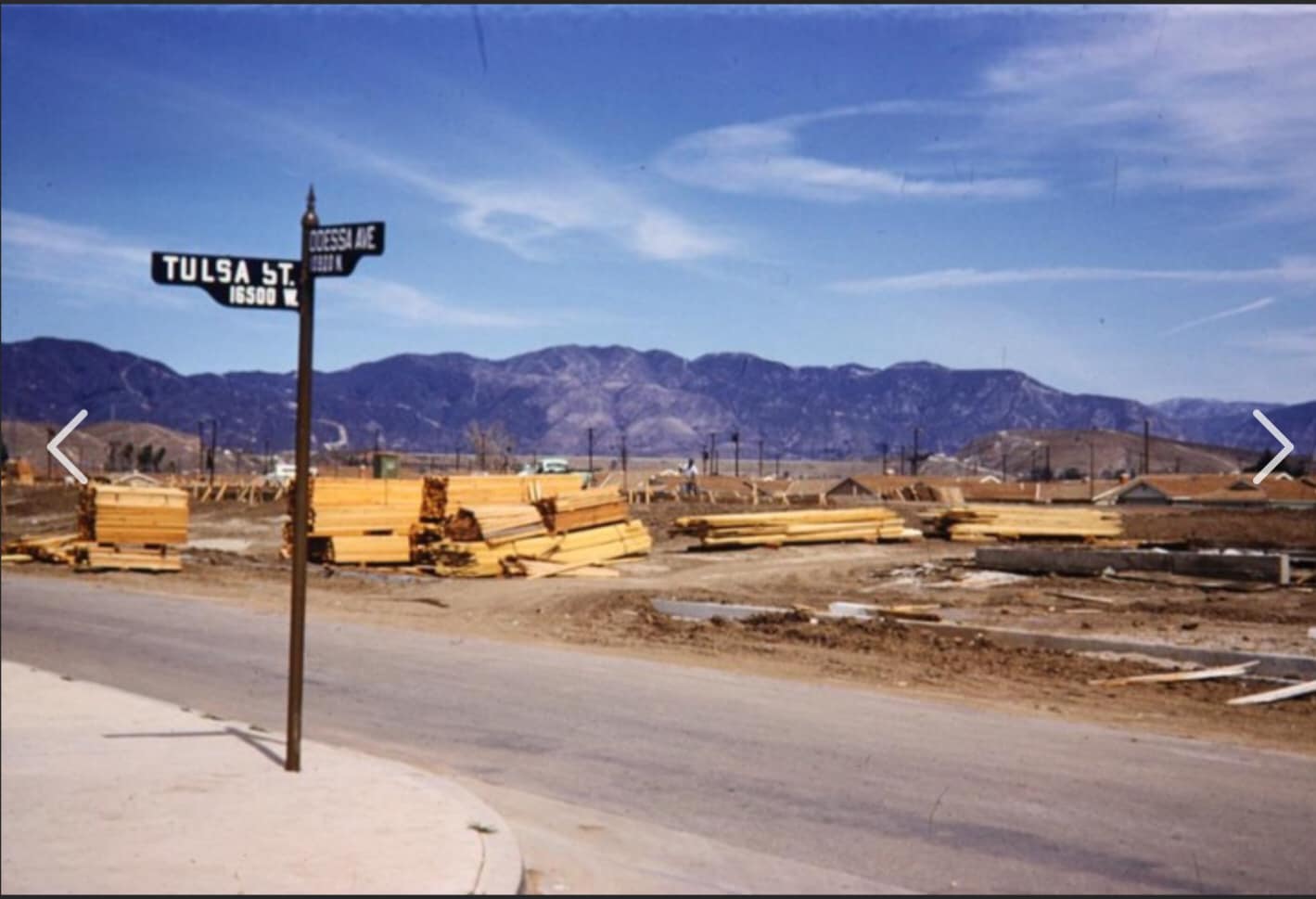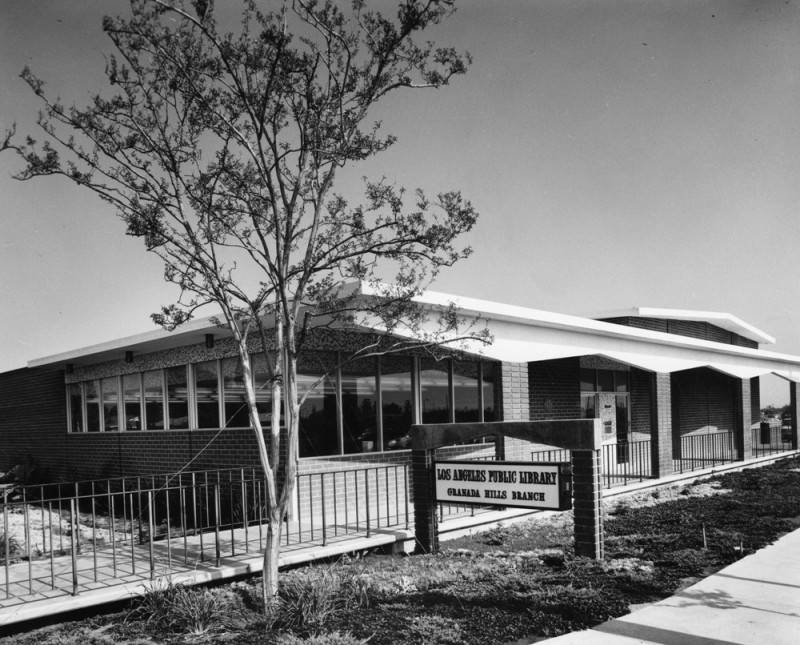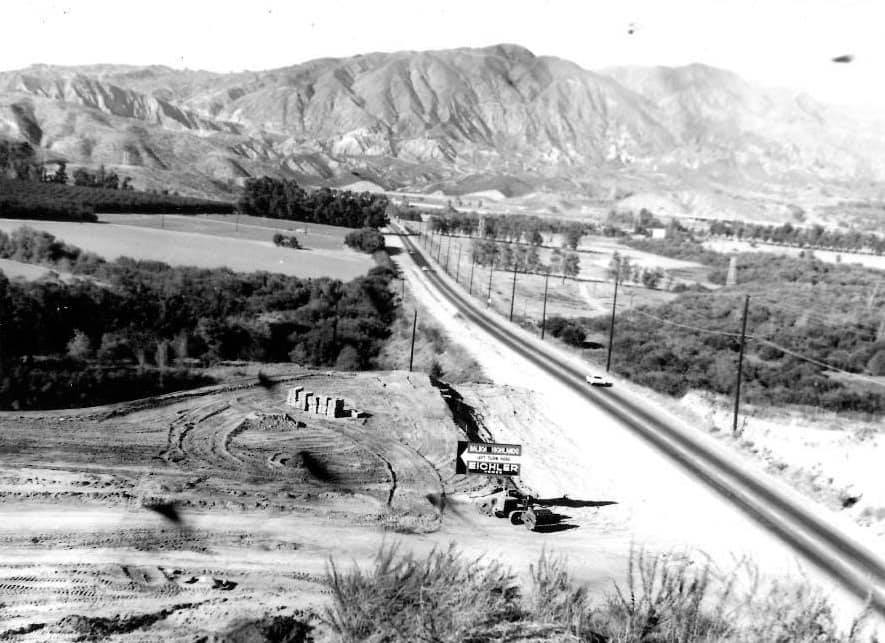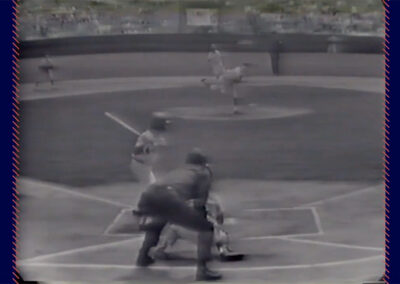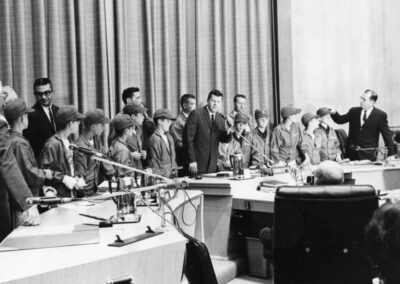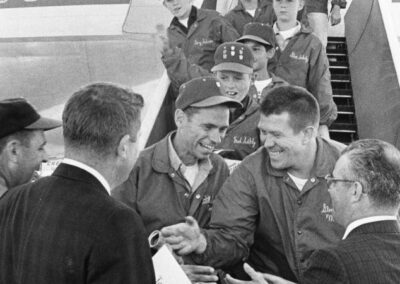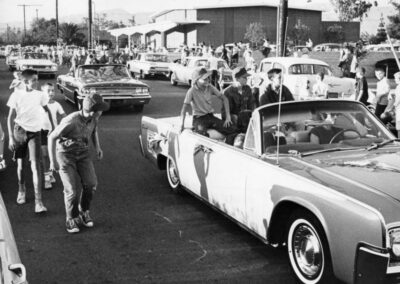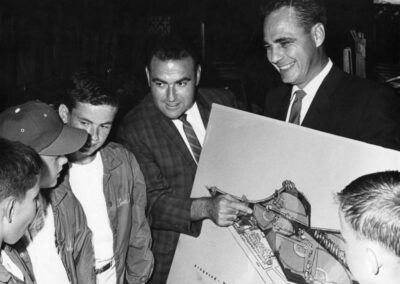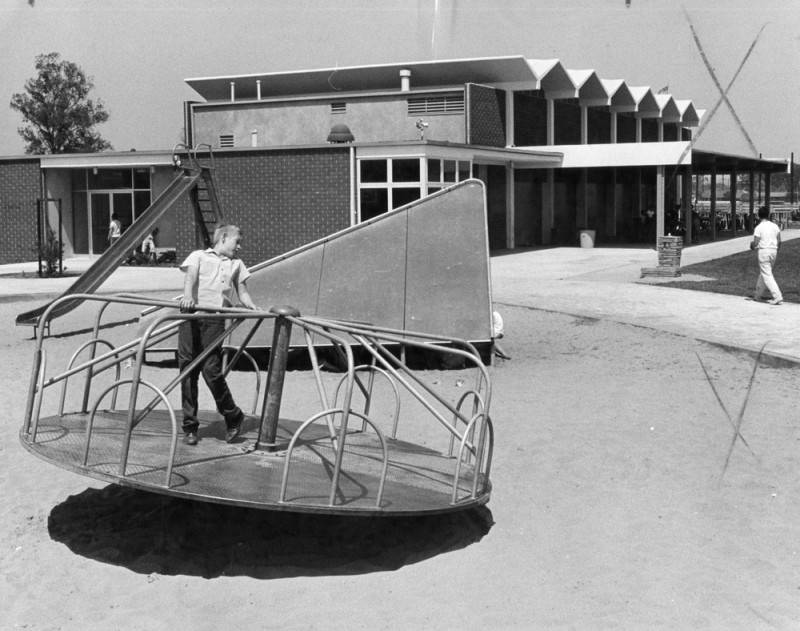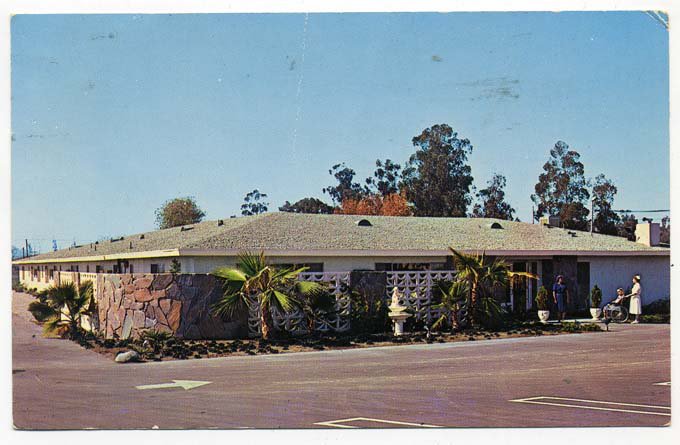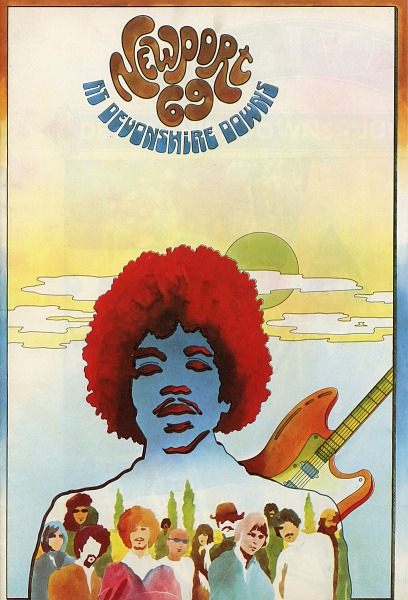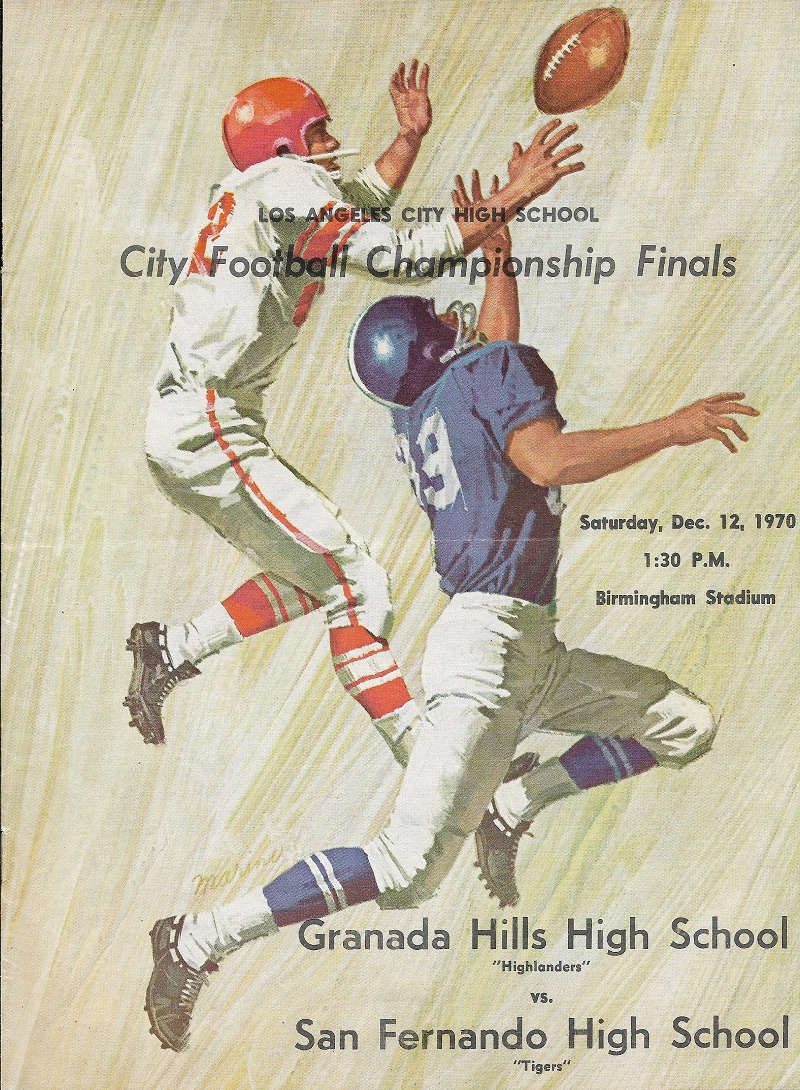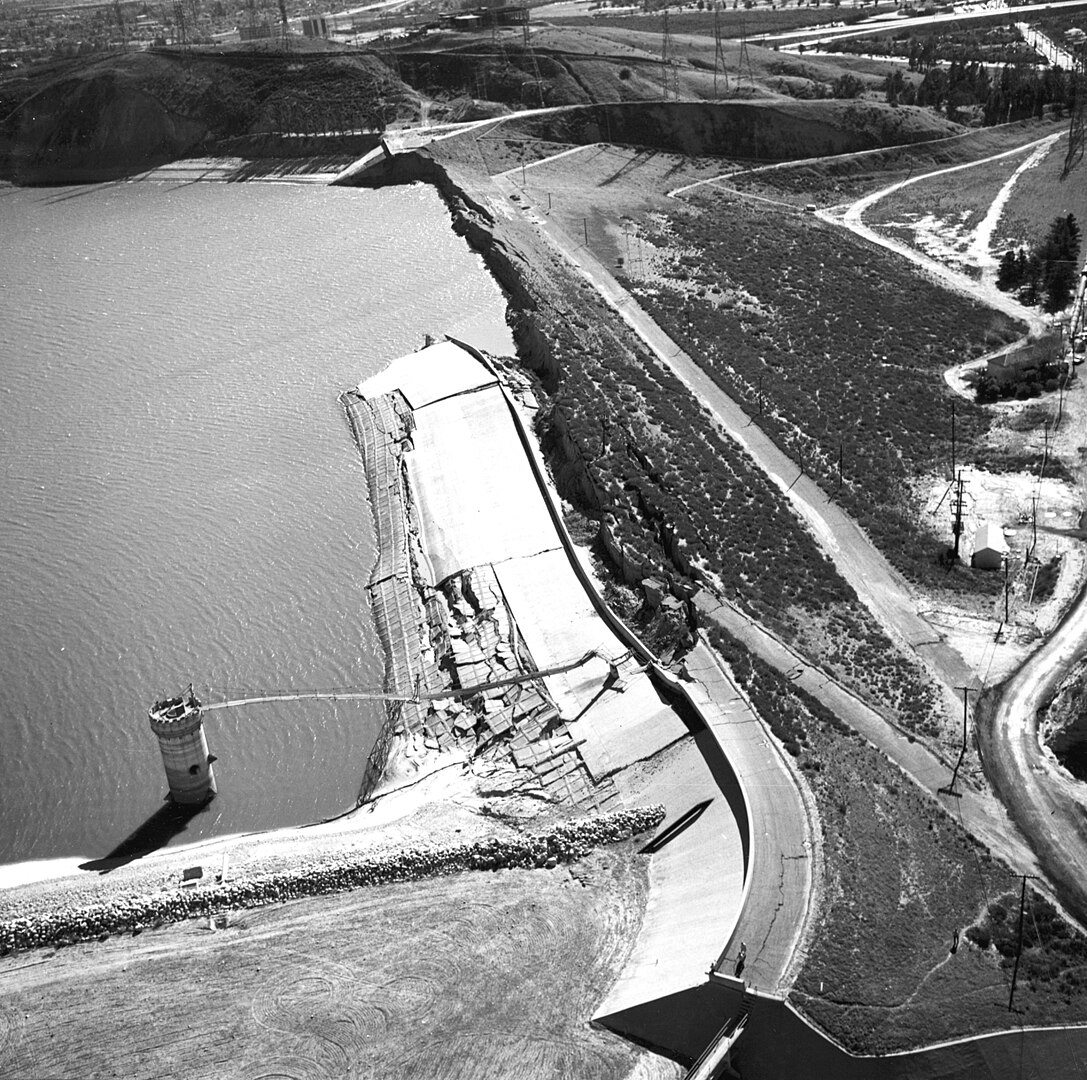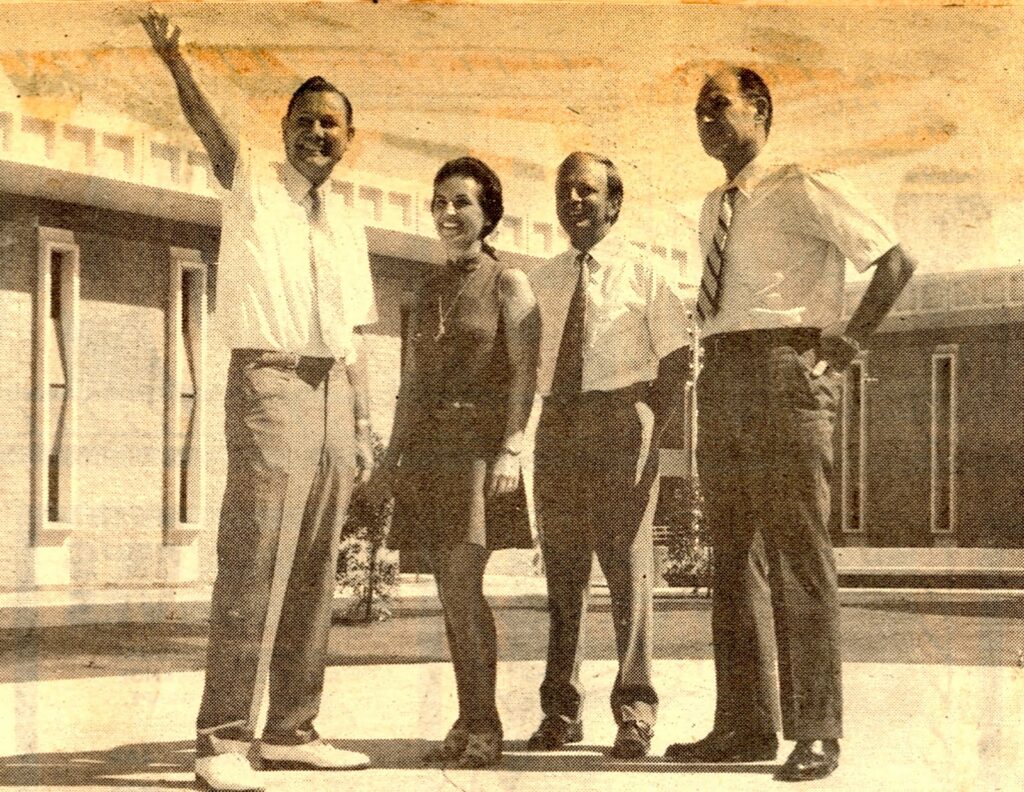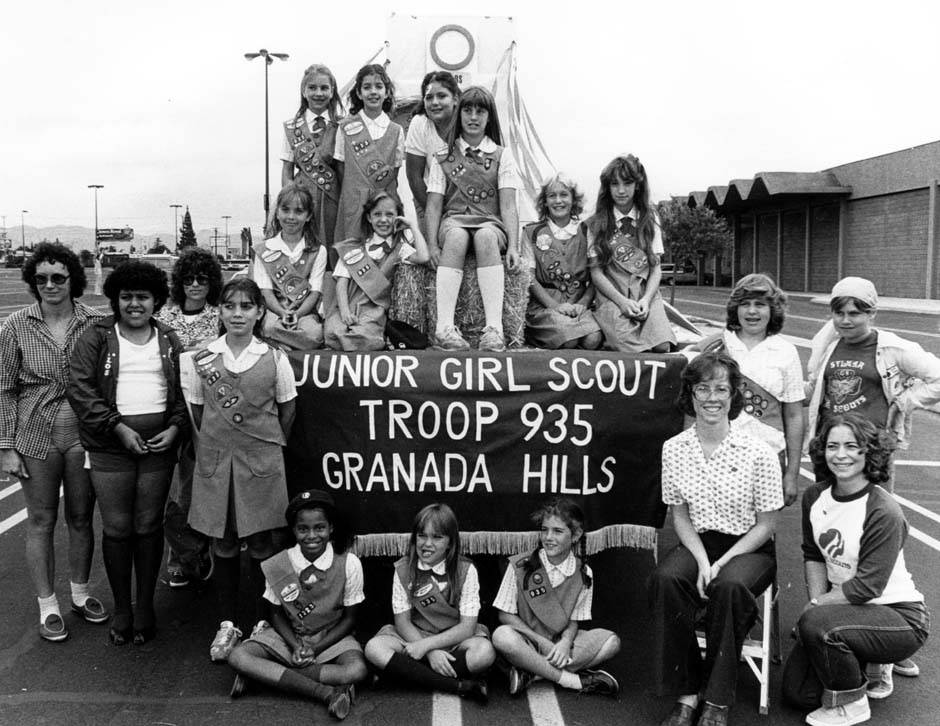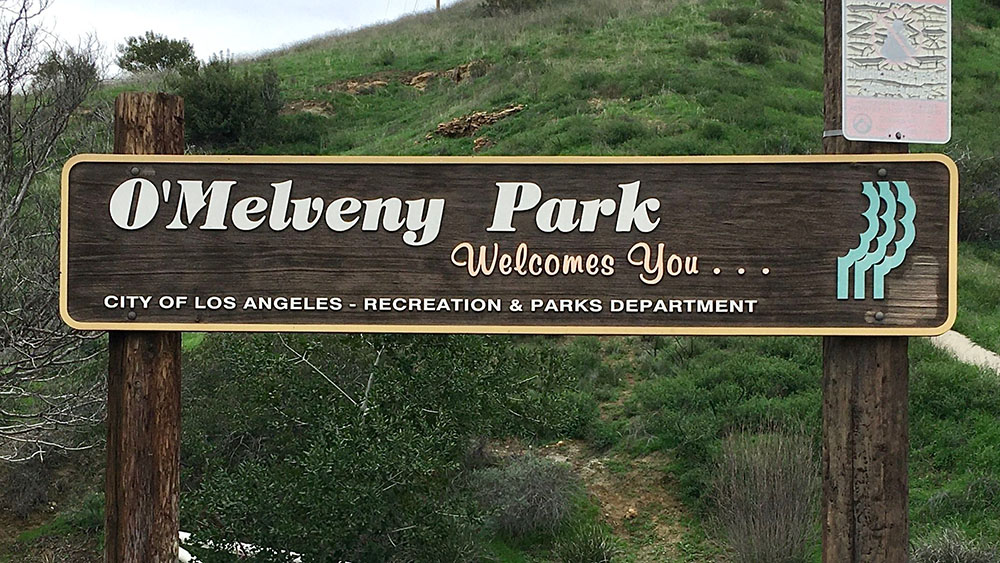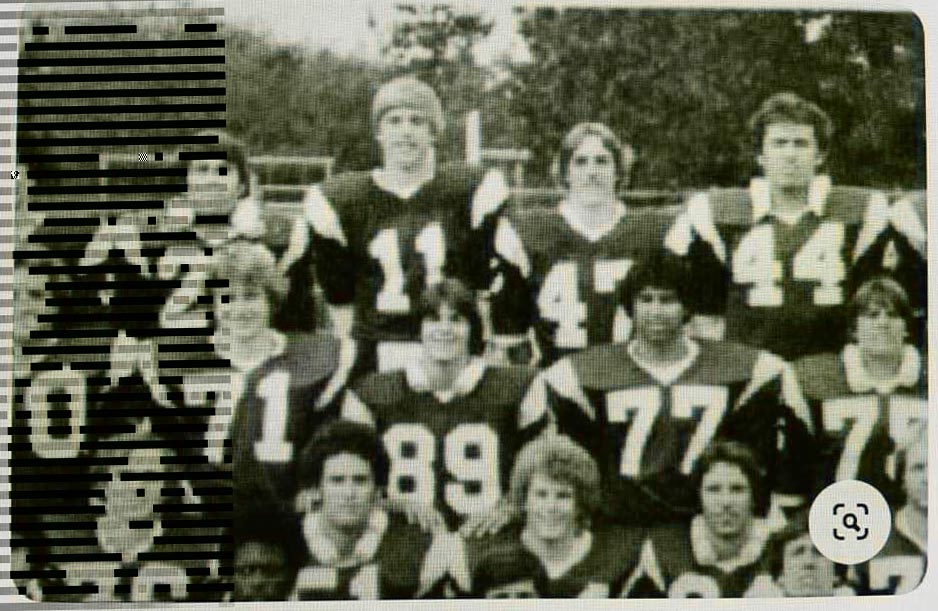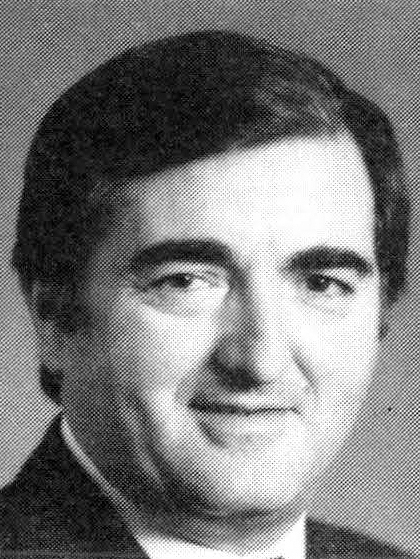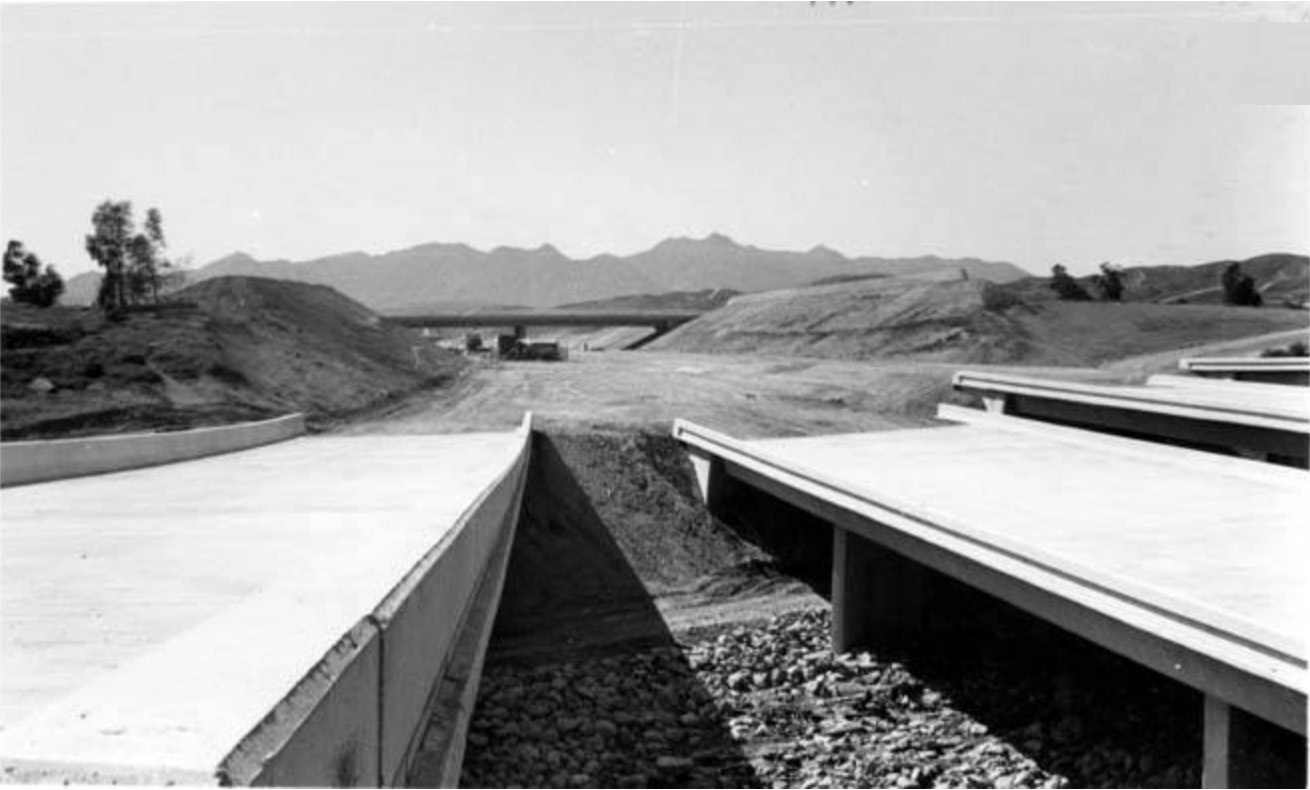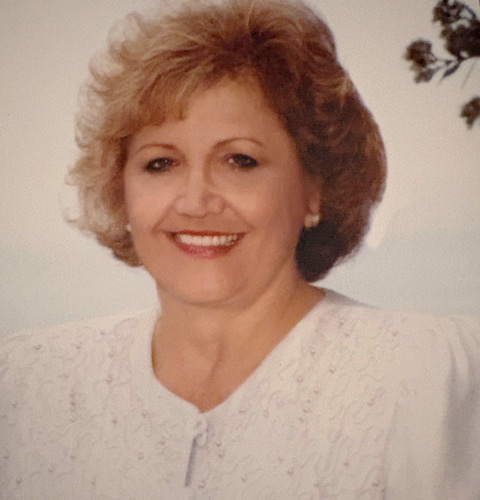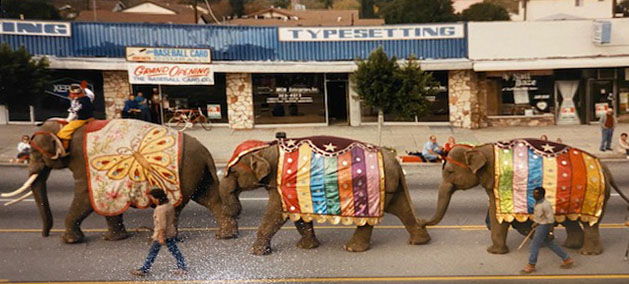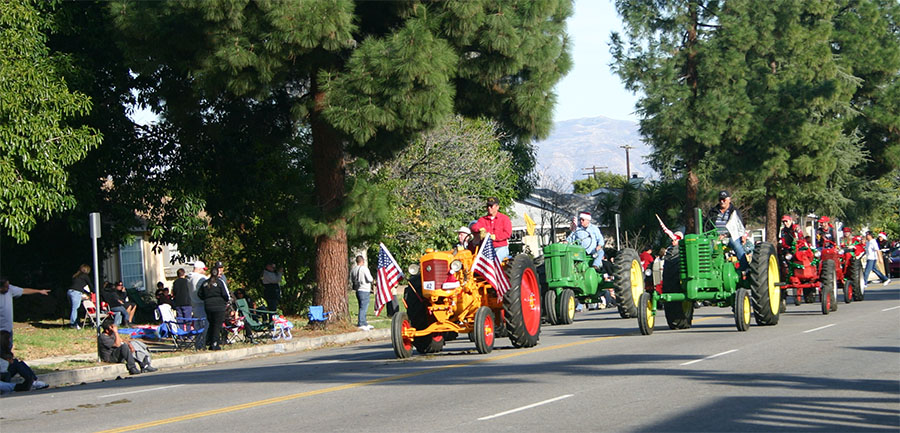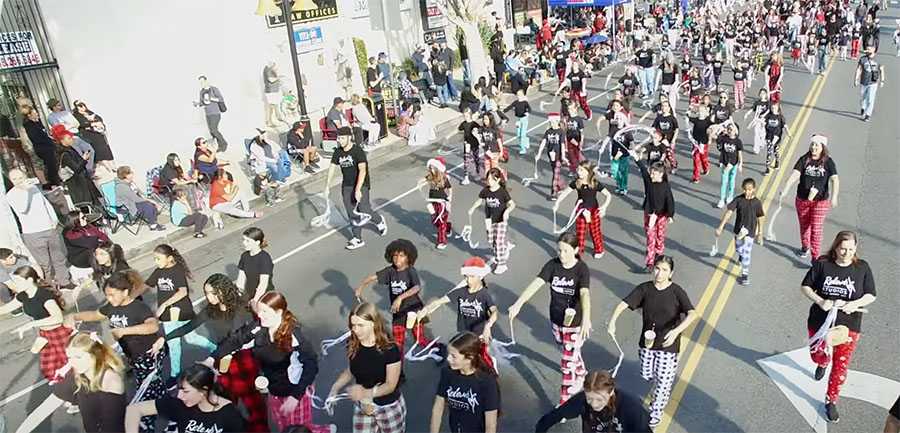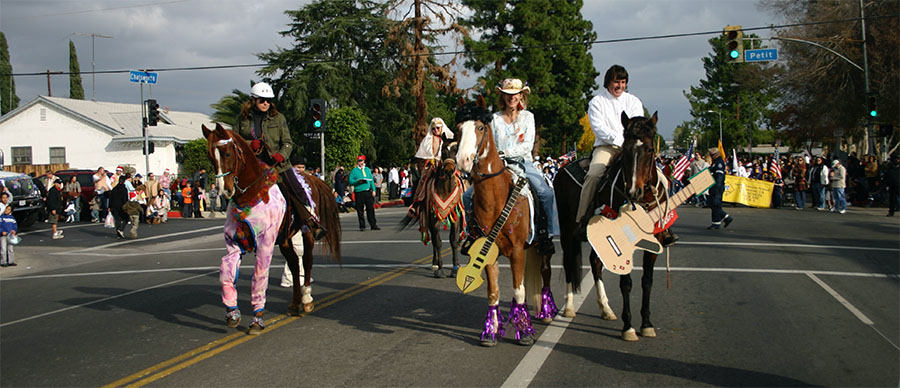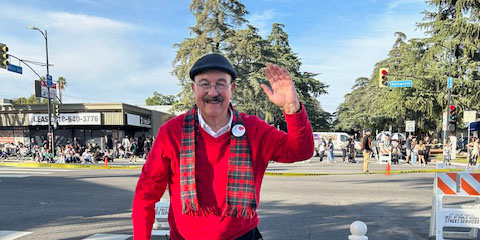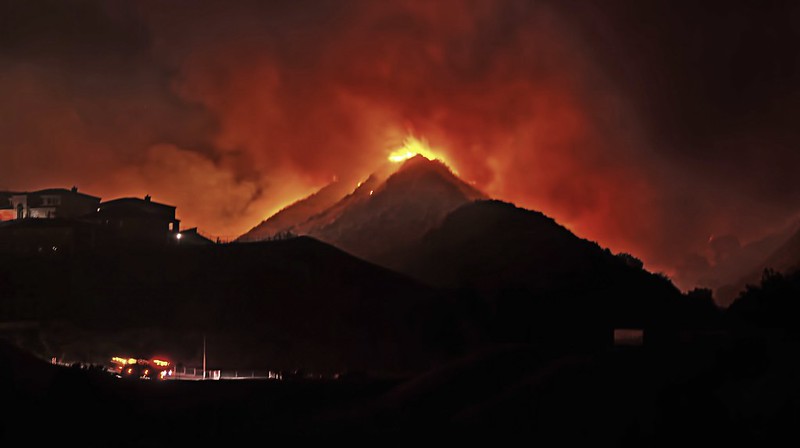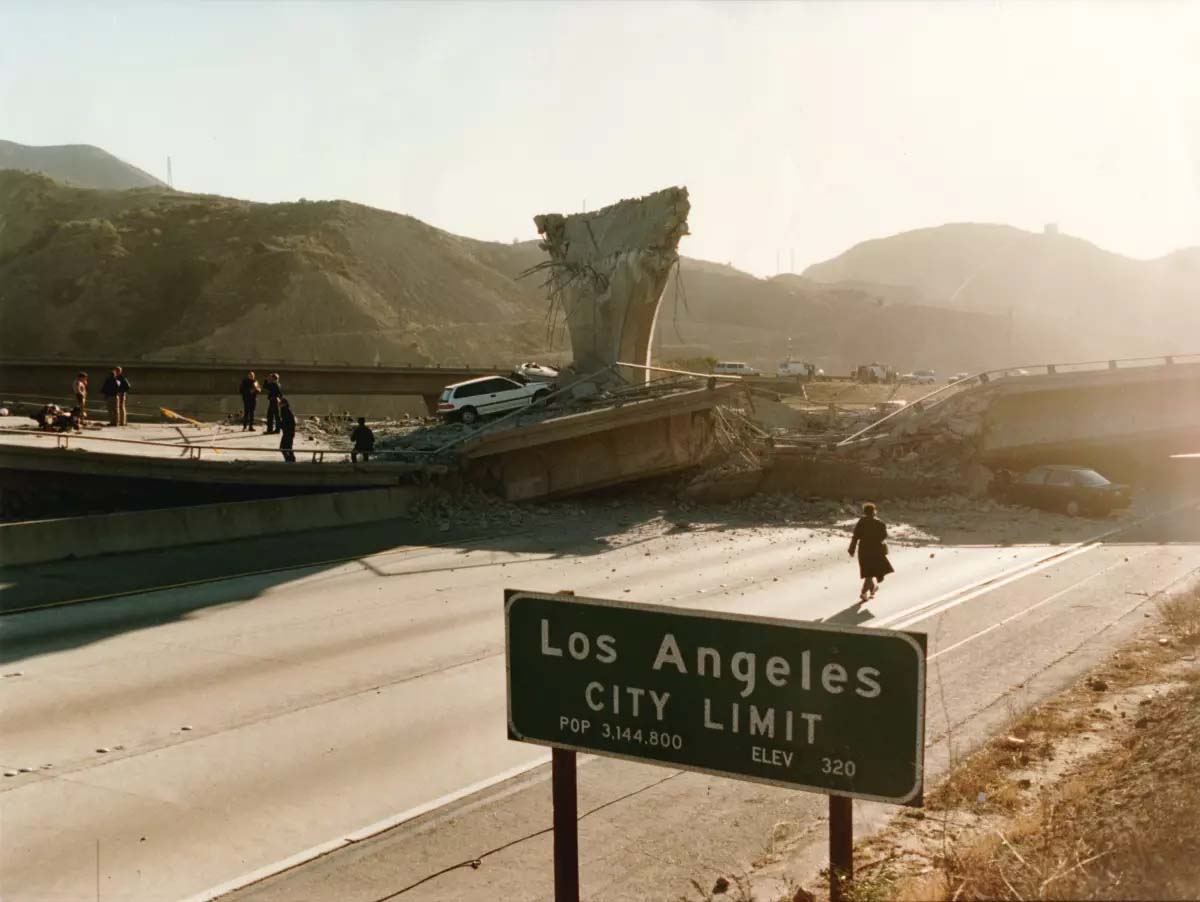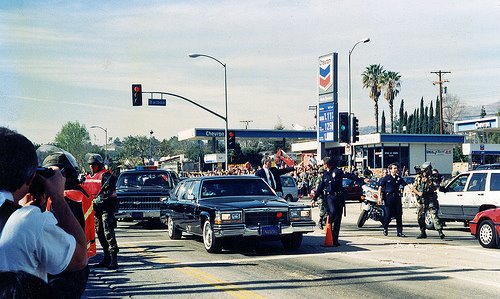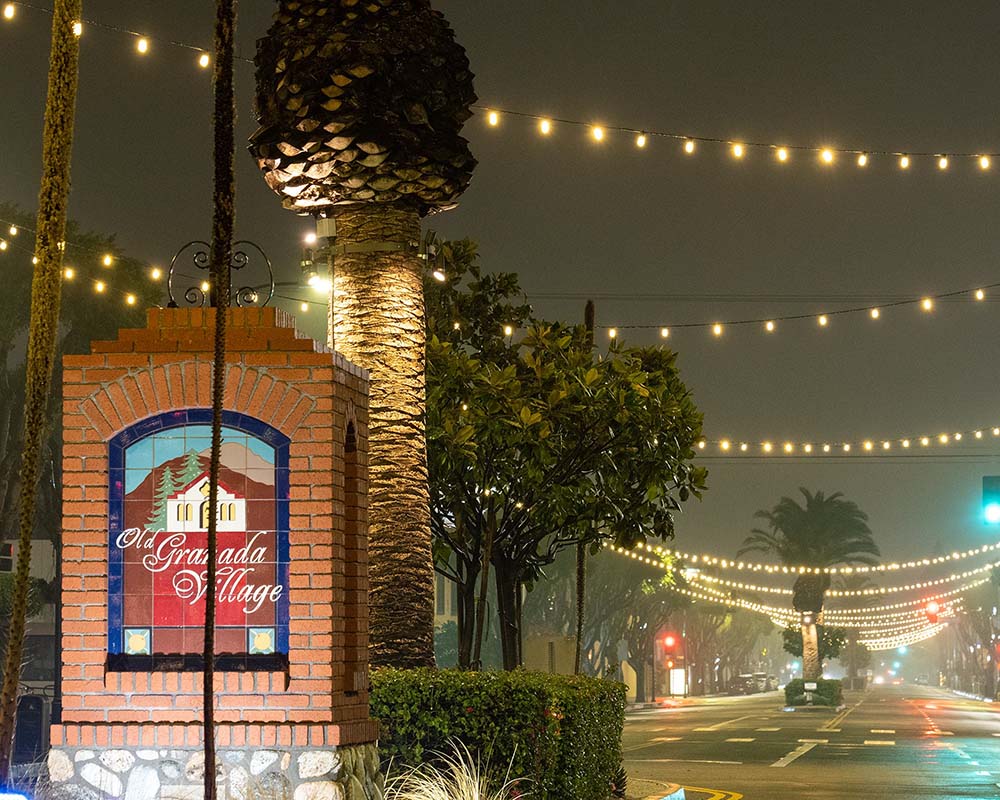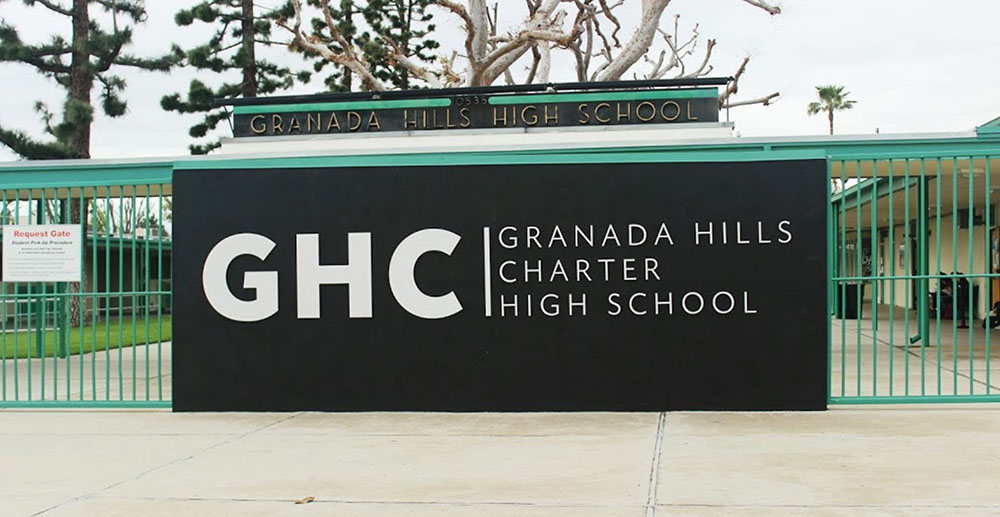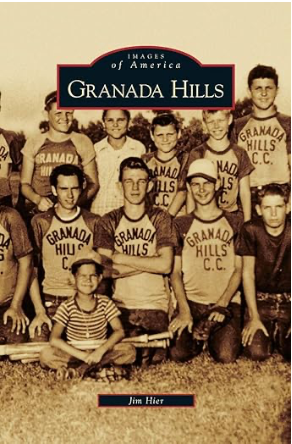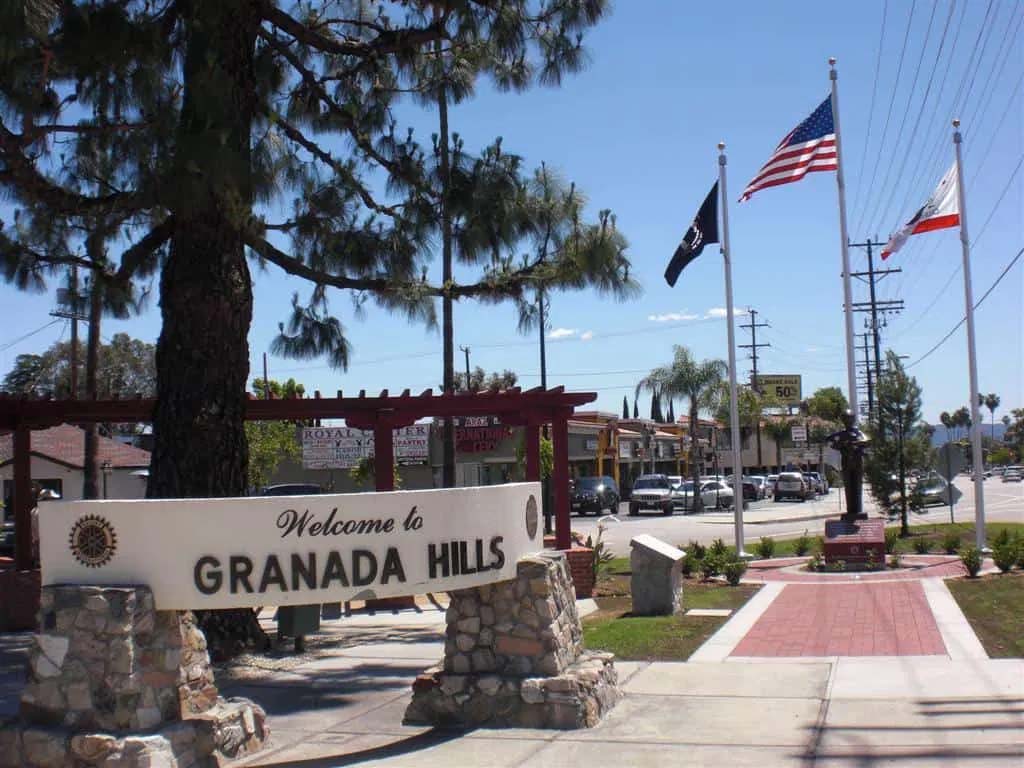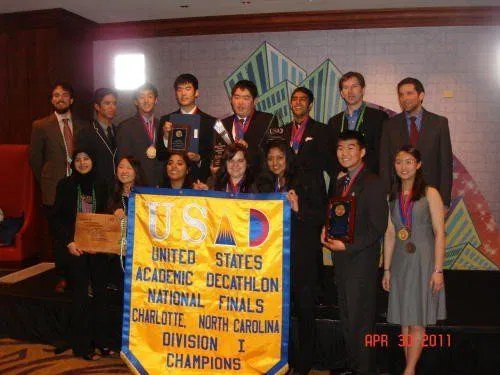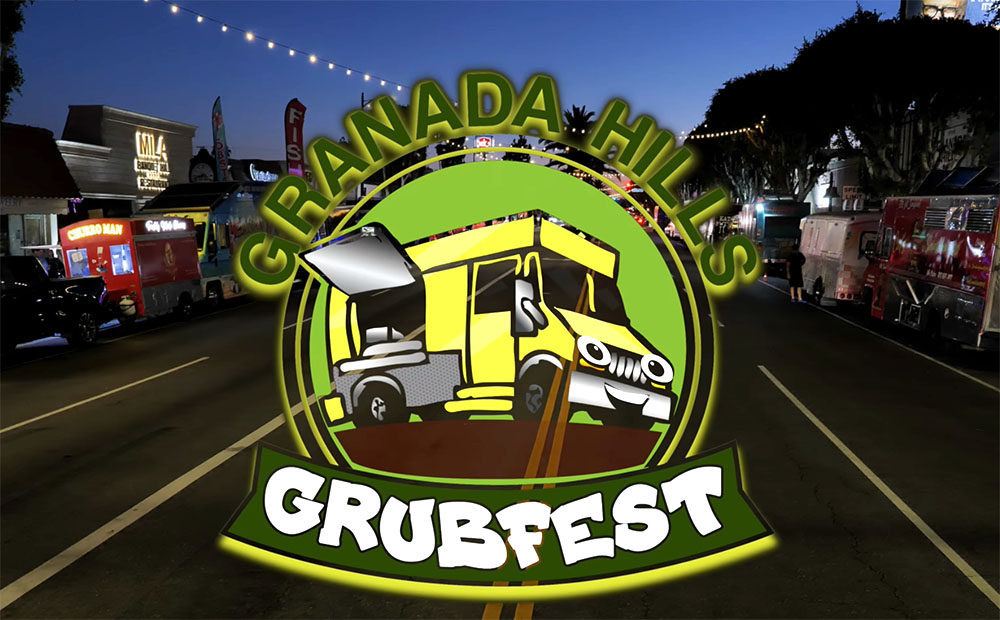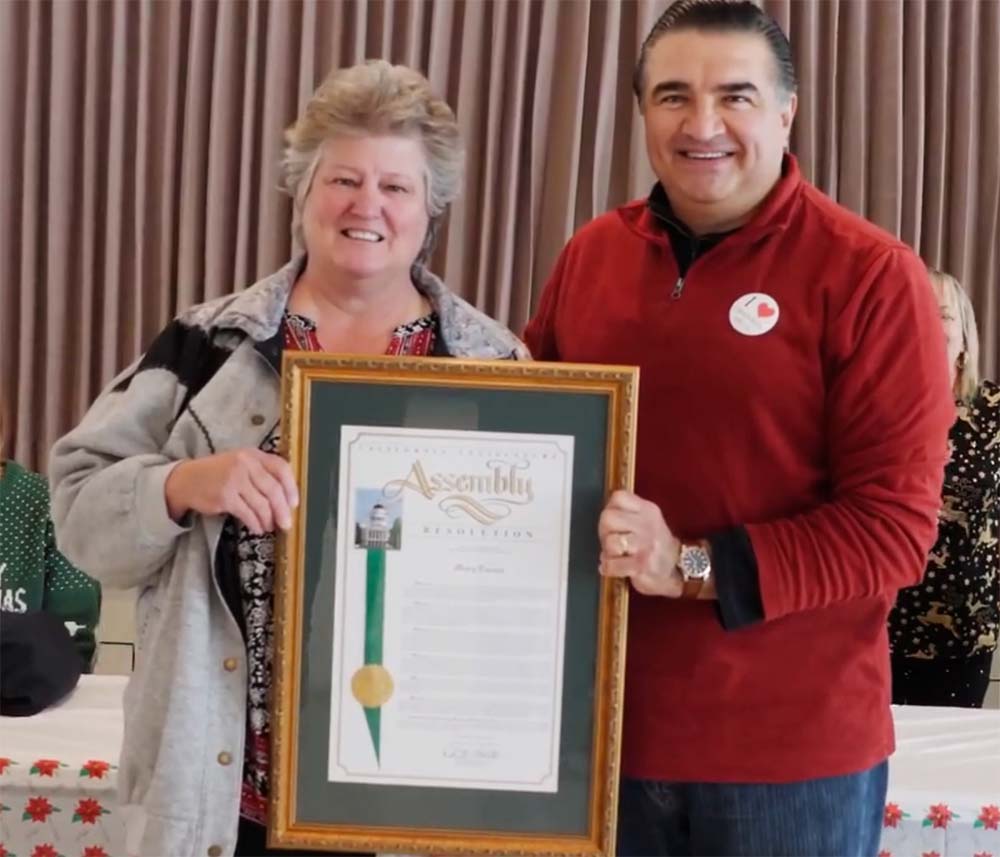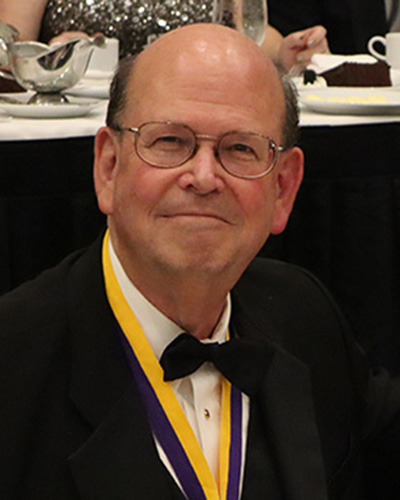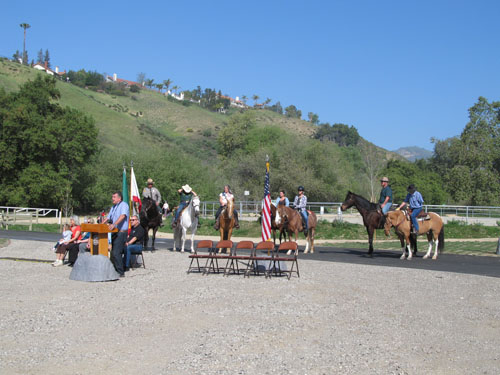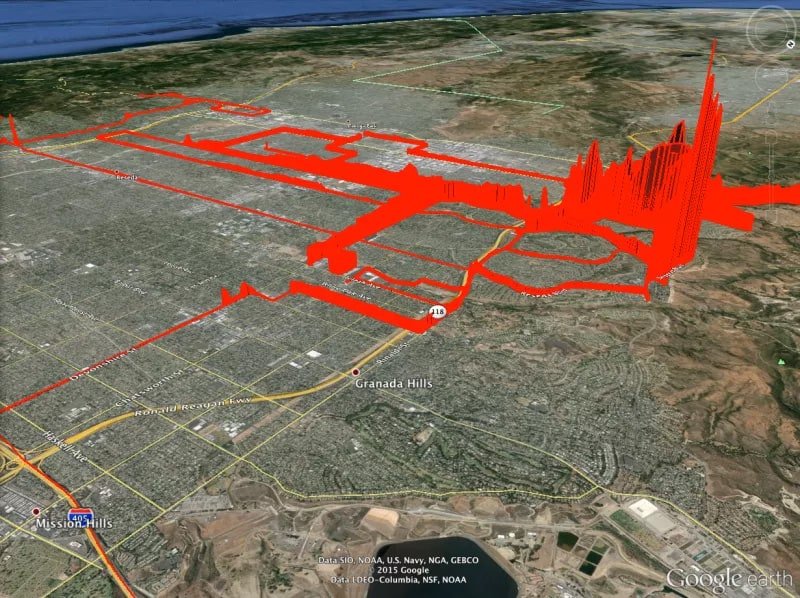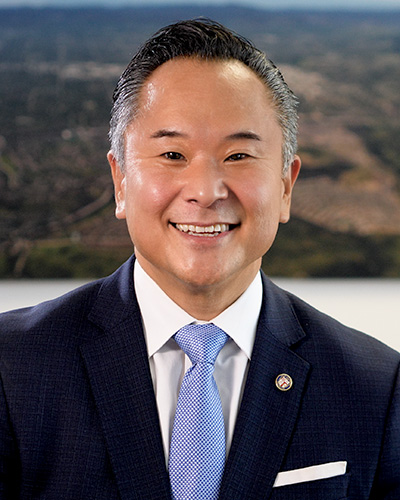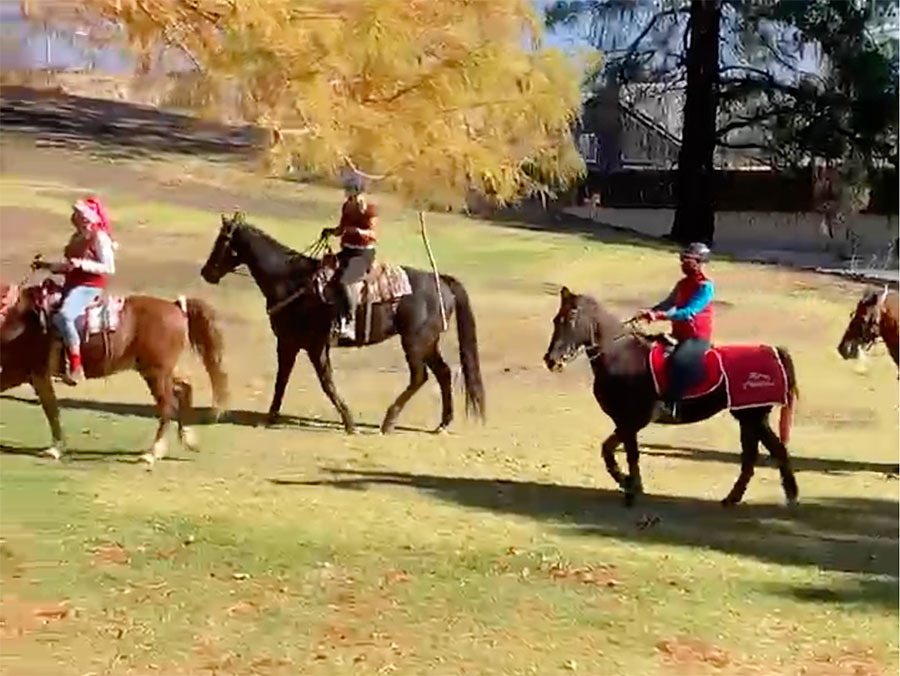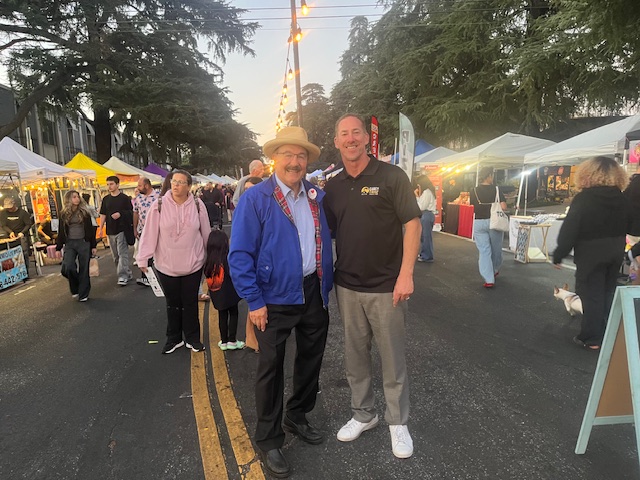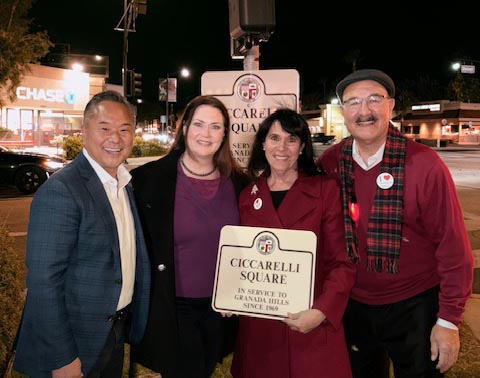OUR STORY
“The Valley’s Most Neighborly Town”
The story of our town begins with a coin toss in 1881, a rabbit industry, and lots of oranges.
Our Story
Over the Years
1847-1876
Our First Developers
The last Mexican governor of California, Pio Pico, sells the San Fernando mission lands to Euglogio de Celis to raise money to fight the U.S., to no avail. De Celis keeps the property post-statehood and his heirs sell the remaining Rancho Ex-Mission San Fernando lands to former state senators Charles Maclay and George K. Porter along with Porter’s cousin Benjamin R. Porter. Maclay, who wanted to subdivide and develop a town, gets the Mission land East of Sepulveda, encompassing what is now San Fernando and Pacoima. The Porter cousins, interested in agriculture, get the land west of Sepulveda Blvd.
1881
The Coin Toss
The Porters go their separate ways and toss a coin to divide the land. George won and chose the land from Sepulveda to Aliso Canyon, south to Roscoe. George establishes the Porter Land and Water Company and develops extensive irrigation systems on a portion of the land. He experiments with a variety of citrus trees. It’s rough without reliable water.
Ironically, the “loser” of the coin toss, Benjamin R. Porter, gets the property east of Zelzah which turns out to be rich in oil deposits.
1903-1904
Speculation and Profit
LA city officials agree to move forward with former Mayor Fred Eaton and Department of Water and Power superintendent William Mulholland’s big idea: bring water from Owens Valley to Southern California via the Los Angeles Aqueduct. This poorly kept secret inspires the formation of a land syndicate to purchase the Porter Land. L.C. Brand (“father” of Glendale) secures a 3-year option to purchase the 16,000 acres of the Porter Land and Water Company for $35 an acre. Prices soar to as much as $4,000 an acre. The syndicate’s profit is estimated at $5.5 million.
1913
Water Arrives
William Mulholland stands before a crowd of 40,000 or so and, as the valves are turned, declares “There it is. Take it.”
The water flows into the newly constructed San Fernando Reservoir at the terminus of what will become Granada Hills.
1917
Sunshine Ranch
Martin Henry Mosier, a wealthy Oklahoma oilman, purchases 4,100 acres from the San Fernando Mission Land Company and names it Sunshine Ranch. The ranch is planted with 1,200 acres of citrus, apricots, walnuts, beans, and alfalfa. A large dairy and poultry operation is built. The center of operations is the intersection of Rinaldi Street and Shoshone Avenue. 35 buildings are painted a bright orange-yellow. 3 of the original bunkhouses are still there.
Immediately to the east of Sunshine is The Cascade Ranch, named for its northern terminus The Cascades. The eastern portion of Granada Hills will be formed from this property.
1925
Suburban Estates, Inc.
The 4100-acre Sunshine Ranch is sold to a syndicate of wealthy businessman who form a holding company known as Suburban Estates, Inc.. They appoint syndicate members Edwards-Wildey Company, large L.A. realtors, as their selling agents. The Sunshine Ranch Community Development Project promises to spend $10 million in land and infrastructure improvements–streets, sidewalks, water, gas, electricity. The 3-phase plan starts with the development of 400 acres consisting of 1/2 to 6-acre parcels. Phase 2: Two to 10-acre country estates in the lower hills. Phase 3: cabin sites in the canyons and higher elevations.
1926
Our Town is Named
1927 Granada ad promoting raising chickens and rabbits
1927 Granada ad promoting raising chickens and rabbits
April 18, a free Spanish barbecue and town naming contest is held. The winning name, Granada, is selected because the area’s appearance and climate feels like Granada, Spain. Granada is promoted as a place to raise rabbits and poultry in addition to citrus, avocados, and figs. Initially, sales are brisk.
The first house, built even before the town is named by the former LA Chief of Police, Capt. J.L Butler, still stands at Westbury and White Oak.
1927-1928
Society begins
The Granada Building is built at White Oak and Chatsworth and becomes the social center of Granada Hills for decades. The Granada Woman’s Club is organized. The Granada Rabbit Association is formed as a backyard industry of rabbit meat and fur develops. Granada Elementary school opens.
The Chamber of Commerce is organized and its first success is securing street lights in 1928.
1929
The Great Depression
The Great Depression starts. The town growth slows as major construction stops and rationing begins. The new residents of Granada keep gradually improving the town, including the first gas station at Devonshire and Balboa.
1932
The Deodar Cedars
The Deodar Cedars are planted along White Oak leading up to the entrance of Sunshine Ranch which is still in operation. They are purchased by Sunshine Ranch superintendent John Orcutt from Teague’s nursery in Woodland Hills in exchange for fertilizer produced at Sunshine Ranch.
1932
Granada Orange Estates
Suburban Estates goes into receivership and is taken over by the California Trust Co. Home sites are now called Granada Orange Estates and the development expands.
Granada Elementary closes.
1940
Orange Blossom Festival
Annual Orange Blossom Festival during the last two weeks of April is launched by the Chamber of Commerce. The festival includes a parade down Chatsworth Street. As the aerial image shows, in 1940 there are still many orange groves.
1940-present
Horses: Cagney Ranch and North Rim Ranch
Not everyone struggles during the Great Depression. Thoroughbred breeding farms spring up in communities all over the San Fernando Valley, including Granada. One such farm is built in Granada by Walter T. Wells of the Layne-Wells Corp in Los Angeles. This property will be purchased by MGM clothing designer Gilbert Adrian and his wife actress Janet Gaynor. They will sell it to the actor James Cagney in 1953. The original home is still standing, although most of the property was sold and the magnificent barn was razed in the 198os. Download a well-researched paper (PDF) about the property written by Richard Miseroy and a slideshow of images he took through the years (PDF).
A more community-minded horseman, Minister Leonard Eilers, known as “The Preachin’ Cowboy”, establishes his North Rim Ranch next to Aliso Creek, north of San Fernando Mission Blvd in 1941. This ranch becomes a community gathering place for decades to come. The Eilerses watched after many of the community’s children during the war and opened their home to many foster children.
There have been many large Granada Hills horse ranches with summer camps, ranger clubs, breeding programs, and horse shows. Today there are still a few small horse ranches and boarding stables. Although small, they add to a sense of country-living north of Rinaldi.
1942-1949
Granada Hills
Our town becomes Granada Hills in 1942 after a request by the U.S. Post Office to avoid confusion with Northern California’s Grenada. WWII ends and the GIs come home, heating up the new home market and reinvigorating our town.
The first grocery store opens, the first church is built, and the first newspaper is published.
Granada Hills Rotary Club is founded.
Granada Elementary reopens.
The decade ends with snow!
1950-1955
“The Valley’s Most Neighborly Town”
Granada Hills adopts its slogan “The Valley’s Most Neighborly Town”. We get our first bank, a branch of Bank of Encino.
Tulsa Street and Haskell Street Elementary schools open.
The Miss Granada Hills beauty pageant starts (it will end in 1992.)
1957
Street Lights
1957 was a big year for us.
Granada Hills Post Office opens.
Chamber President Fred Weitkamp (far left) is instrumental in pursuing and obtaining LA City Street Lights for the Granada Hills Community.
He also attends a naming meeting for our new high school, and helps boost the community name by requesting Granada Hills High rather than after a US President, in fashion at the time.
Patrick Henry Jr. High School opens.
Knollwood Country Club, after a year as a private club, becomes a public course in 1957.
1958
Chamber of Commerce Office
The Granada Hills Chamber of Commerce gets an office.
Rinaldi Street Elementary opens.
1959
Khrushchev Visit
Soviet premier Nikita Khrushchev visits the U.S. and is driven through Granada Hills to inspect two types of housing developments in Granada Hills – in lieu of a Disneyland excursion, which was promised but ultimately deemed unsafe and unseemly.
Link to L.A. Times story of Khrushev’s visit
Porter Jr. High opens.
1960
Marking a Decade of Growth
The population of Granada Hills has increased 1000% since 1950, one of the highest 10-year growth rates in the nation.
Danube Elementary and Knollwood Elementary Schools open.
Granada Hills High School opens.
1962
Our own Library
Granada Hills Library opens.
Architecturally notable Eichler homes are built in Balboa Highlands.
El Oro Way, Granada Hills’s 7th elementary school, opens.
1963
Granada Hills Little League National Champions
The Granada Hills Little League wins the Little League World Series, which is broadcast on ABC’s Wide World of Sports for the first time, bringing national attention to Granada Hills.
Watch the game on Little League’s Facebook page.
Granada Hills Recreation Center (AKA Petit Park) is dedicated.
1964
Council District 12 moves
Granada Hills, along with other communities in the Northwest San Fernando Valley, gets City Council representation when CD-12 moves from Downtown. Incumbent John P. Kennedy (R) agrees to relocate to the area. Kennedy represents Granada Hills for 3 years.
Council District 12 will grow to include the communities of Chatsworth, Northridge, Porter Ranch, West Hills, Reseda, along with Granada Hills.
1966
Granada Hills Hospital Opens
Granada Hills Community Hospital opens.
The Deodar Cedars on White Oak are declared a historic cultural monument.
The old Granada Building is refurbished for ChatOak Pet Clinic and loses its second story.
1969
Newport 69
Newport 69 concert, a 3-day music festival at Devonshire Downs is spearheaded by the Granada Hills Rotary Club, less than 2 months before Woodstock.
The festival features Jimi Hendrix, Creedence Clearwater Revival, Joe Cocker, Jethro Tull, and Ike and Tina Turner.
1970
GH High School Football
“1970 was a very exciting time to be a student at Granada Hills High School, largely due to the success of our Highlander football team. I attended all the games at our home stadium, and all of the away games, and have the ticket stubs to prove it, carefully preserved in my scrapbook from that time.”
– Claudia Petroski
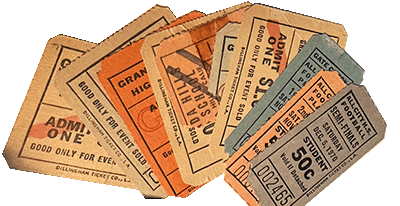
Dana Potter Quarterback
Head Football Coach Jack Neumeier
Assistant Coach Daryl Stroh
The team’s success was attributed to the innovative five-receiver passing attack, later known as the spread offense, developed by Coach Jack Neumeier.
1971
Sylmar Earthquake
The early hours of February 9 bring a tragic earthquake, with the loss of 65 lives. 80,000 people below the damaged Van Norman Dam are evacuated for several days. It is estimated that if the dam had failed, Devonshire St. would have been under 10 feet of water! The Dams are subsequently decommissioned and major changes to seismic regulations are enacted.
John F. Kennedy High School opens.
Pictured at left are Principal Albers, Girls VP Muslin, Boys VP Ross, and Superintendent Schacter.
1971
First Girls AYSO Soccer Team

Joe Karbus, father of AYSO girls soccer
The first AYSO-sanctioned all girls’ soccer team in the nation is played at Petit Park, pre-title IX. 3 soccer coaches – Joe Karbus, Mario Maehabo and Ron Ricklefs – are credited with developing the girls’ program. Joe Karbus will be inducted into the American Youth Soccer Organization Hall of Fame in 2005.
1973
Youth in Action Parade
The Annual Youth in Action parade begins, sponsored by the Granada Hills Chamber of Commerce and organized by Tom Williams and Thelma Witt. The parade featured marching bands, drill teams, and other youth commmunity groups. Youth-centric parades continue in Granada Hills to this day.
1976
O’Melveny Park
John O’Melveny deeds his ranch to the city for use as a park. At 672 acres, O’Melveny Park is the 2nd largest city-owned park in L.A., second only to Griffith Park.
1979
John Elway graduates to Glory
John Elway graduates from Granada Hills High School and will become quarterback of the Denver Broncos, leading his team to two Super Bowl victories. He will be inducted into the NFL Hall of Fame and we will rename the Granada Hills High stadium John Elway Stadium in 1998.
1979
Hal Bernson Elected to City Council District 12
Los Angeles City Councilman Hal Bernson (R) is elected and will serve Council District 12 for twenty-four years. He retires in 2003.
1982
118 Freeway Opens
118 Freeway completed, scores of local kids invited to ride bikes on it before its grand opening. Chamber Of Commerce petitions CalTrans to include a Granada Hills exit.
1983
“Rita’s Tree”
Long-time Granada Hills business owner Rita Ciccarelli, active in local Granada Hills Community Affairs for several decades alongside her husband Jim, suggests a Granada Hills Township “Christmas Tree” of the lone 65-foot-tall Canary Pine Tree located at the intersection of Chatsworth Street and Zelzah Ave.
A community tradition is born! “Rita’s Tree” is now the tallest live celebrated Community Christmas Tree and Annual December Lighting Ceremony in the San Fernando Valley.
1984
Granada Hills Holiday Parade
The Youth in Action parade becomes the Annual Granada Hills Holiday Parade. Local Granada Hills businessman John Ciccarelli is the Founder of the Granada Hills Holiday Parade and will serve as Holiday Parade Chairman for decades.
The parade route is 1.8 miles long and is the largest participant and spectator community parade in the San Fernando Valley.
More than 3,000 youths participate, along with vintage vehicles, VIPs in convertibles, equestrians and other animals.
The parade is given a new theme annually that participants can have creative fun with.
1988
Wildfire
After 3 days of hot winds, early one December morning before dawn a wildfire begins near the Sunshine Canyon Landfill. Fierce winds drive it across the foothills and into Porter Ranch. 15 homes are lost and 25 are damaged. The foothills of Granada Hills will be visited by wildfire several times again: October and November of 2008, October of 2019, and January of 2025.
1989
Snow in Granada Hills

1989 Snow image courtesy ABC7
Substantial and rare snowfall bursts outdoor pipes and snarls traffic but sparks fun.
1994
Northridge Earthquake
Just before dawn on January 17, a 6.7 magnitude earthquake centered in Northridge hit. North of our town, the freeway interchange of I-5 and SR-14 collapses and will be renamed Clarence Wayne Dean Memorial Interchange in memory of the Los Angeles Police officer who lost his life as a result.
In town at the intersection of Balboa and Rinaldi, an underground gas line and explodes when a driver starts his vehicle on the road above.
Lethal damage also occurs in many areas nearby. President Clinton visits our area.
2000
“Old Granada Village”
Old Granada Village Chatsworth Street Business Improvement District corridor is established.
2003
Greig Smith is Elected to LA City Council District 12
Los Angeles City Councilmember Greig Smith (R) will represent District 12 for two terms.
He is reappointed in 2019 when the office is vacated and serves for several months leading up to a special election.
2004
Granada Hills High School becomes a Charter
Completing the 2-year process, LAUSD approves Granada Hills High School as a charter public school, allowing the school greater autonomy over its curriculum, policies, and budget while still receiving public funds. This is the largest school to become a charter.
2007
Images of America: Granada Hills is published
Want to learn more about the history of Granada Hills? Images of America: Granada Hills by Jim Hier is available on Amazon.
“Author Jim Hier grew up in Granada Hills, attending local schools and graduating from Kennedy High School in 1973. He shares his love and appreciation for his hometown in this engaging retrospective, which he put together with the help of dozens of current and former residents who generously contributed many of the stories and images appearing in this book.” – from back cover of Images of America Granada Hills
2010
Rotary Club of Granada Hills
Veterans Parkway
Long-time Granada Hills resident and business owner Dr. Carl Melnik leads a community-wide effort sponsored by the Rotary Club of Granada Hills to undertake a large beautification landscape project at the Chatsworth/Zelzah triangle. Major sponsors include Councilmember Greig Smith CD-12, The Granada Hills Business District Improvement, and Jake Parunyan, the 2009 Gil Benjamin Granada Hills Citizen of the Year. Other sponsors include Granada Hills South Neighborhood Council, Granada Hills North Neighborhood Council, and Veterans of Foreign Wars Post 2323.
2011
Granada Hills Charter High School wins Academic Decathalon National Title
Granada Hills Charter High School wins the U.S. Academic Decathlon national title. They will go on to a strong showing every year, including additional national titles in 2013, 2015, 2016, 2017, 2019, 2021 and 2022.
Read more about the Academic Decathalon scores
Valley Academy of Arts and Sciences, an LAUSD school, opens.
2011
Grubfest
Every Friday Night from 5-10, Gourmet Food Trucks take their places along Chatsworth between Zelzah and White Oak for the largest ongoing food truck event in California, Grubfest.
Mary Turner receives a Certificate Award from California State Assemblyman Dante Acosta for her service to the Granada Hills Community in 2018.
2013
Granada Hills Community Foundation Created
The Granada Hills Community Foundation was created in 2013 by 1985 Chamber President John Weitkamp. (John’s Father Fred Weitkamp served as Chamber President 1957/58 marking first Father/Son Chamber President Legacy.)
The purpose of the Granada Hills Community Foundation was to create a 501(c)(3) entity to increase support for major Granada Hills Community Events, including Annual Granada Hills Holiday Parade, Annual Granada Hills Street Faire, the current Granada Hills Centennial 100 Observance Celebration, and more.
2013
Aliso Canyon Park
LA Parks & Rec are able to buy the old Damoor’s ranch property on Rinaldi at Aliso Canyon. An equestrian-centric park is opened with a public riding arena, bathrooms, picnic area, hitching rails and horsetrailer parking. This also creates better family access to the Aliso Canyon Park trail allowing generations to enjoy this beautiful natural park.
2015
Aliso Canyon Natural Gas Disaster
In October a valve on a Southern California Gas Co. gas well fails. In the four months before it is stopped, more than 100,000 metric tons of methane and ethane gas escapes into the atmosphere. A Health Study led by UCLA scientists continues until October 2027, looking at the impacts on the health of communities living and working in proximity to the blowout.
2019
LA City CD-12 Councilmember John Lee enters office
CD-12 Councilmember John Lee (I) joins the Los Angeles City Council after a special election. He is reelected to his first full term in March 2020 and was reelected in 2024.
2020
COVID-19 Pandemic
The pandemic brings havoc world-wide and many Granada Hills residents experience illness, loss, isolation, business and school struggles, and a surging homeless population.
On a brighter note, many residents find society outdoors in our beautiful parks and trails. With the Granada Hills Holiday Parade cancelled, a group of riders parade their festively decorated horses for local families.
2024
Farmer’s Market
Local realtor and 2023-2024 President of the Granada Hills Chamber of Commerce, Carey Eckert is the Founder of our Friday evening “Farmers Market” attracting many vendors, community residents and guests since its original opening in the summer.
2024
Ciccarelli Square
The intersection of Chatsworth and Zelzah is named Ciccarelli Square to honor the Ciccarelli family’s service to Granada Hills since 1969. A dedication ceremony with Councilmember John Lee takes place during the lighting of “Rita’s Tree.”
2025
Granada Hills Centennial Celebration
